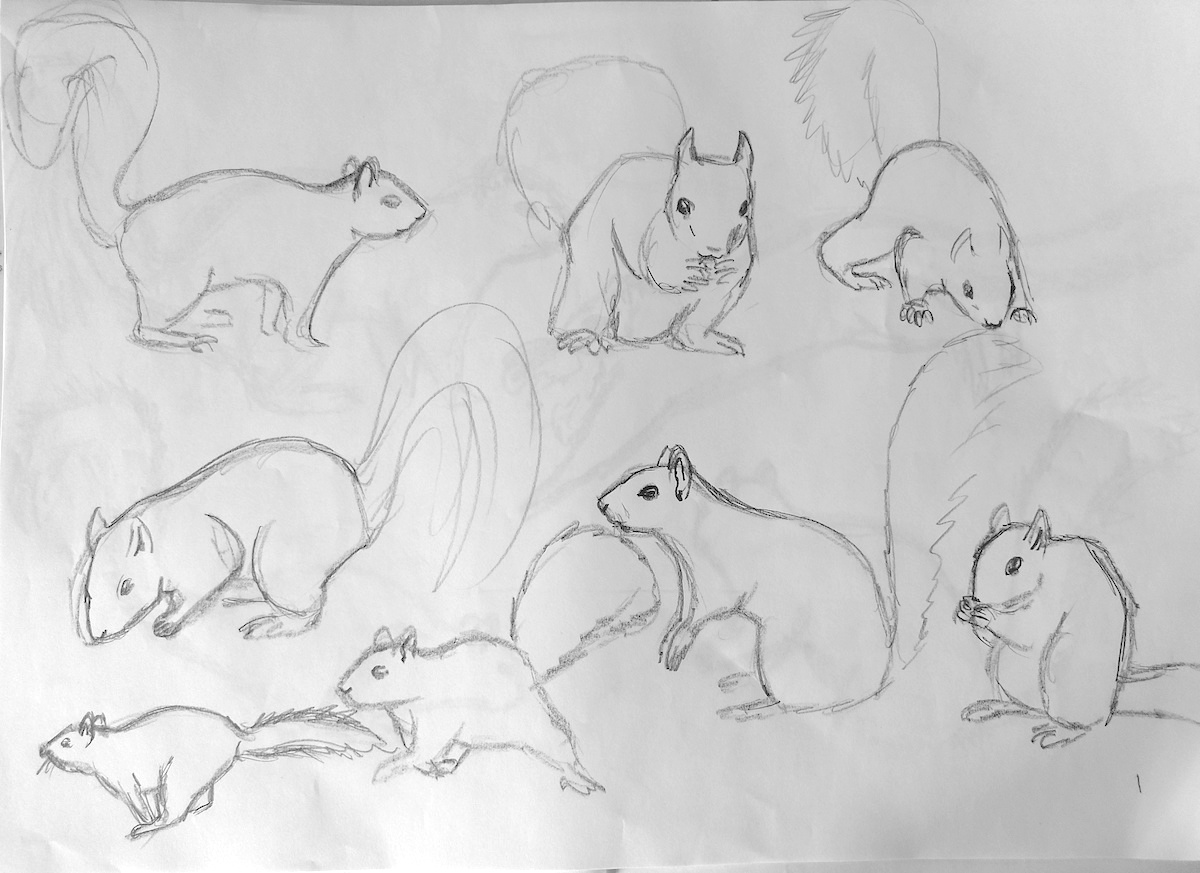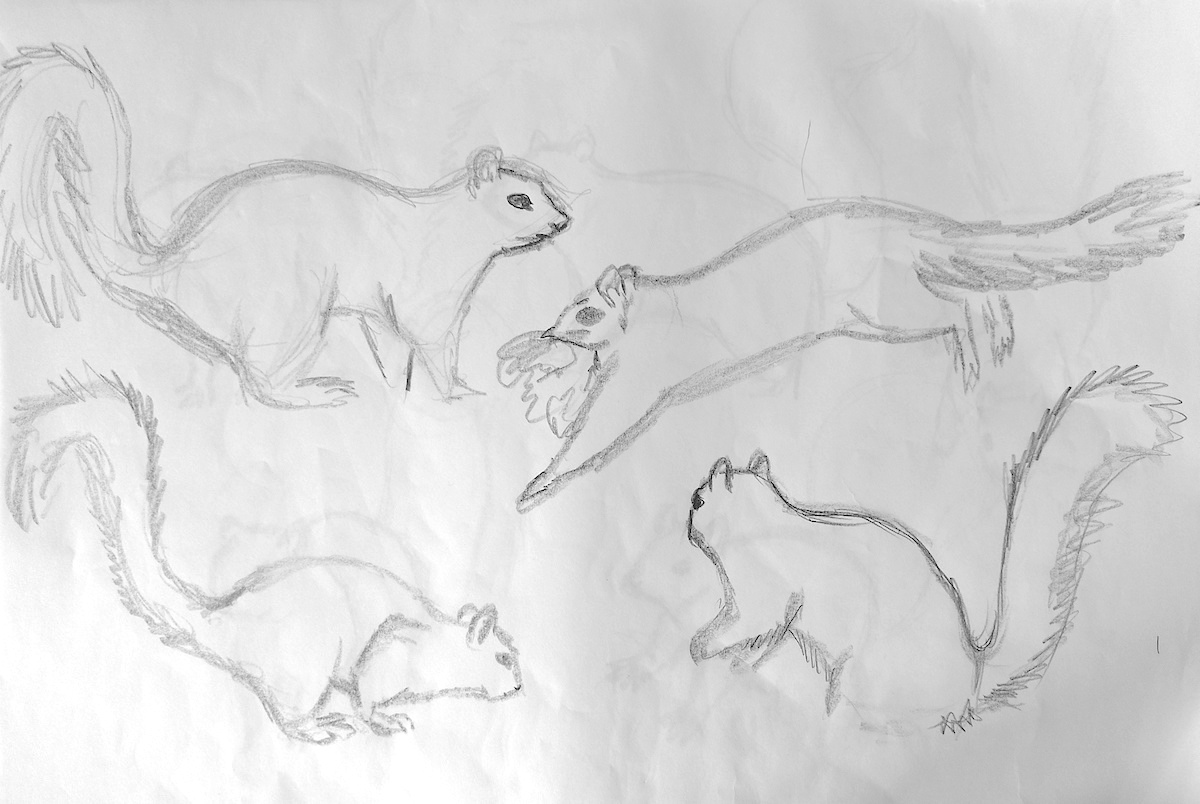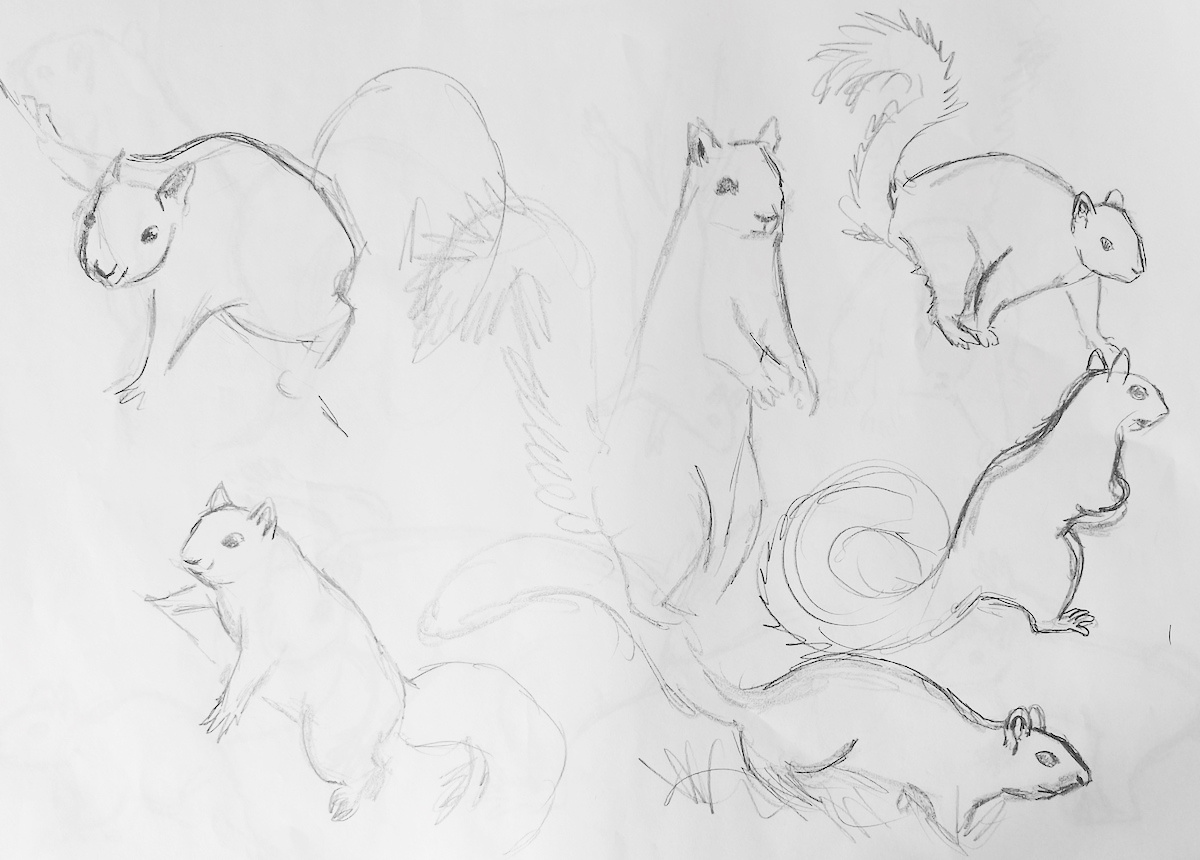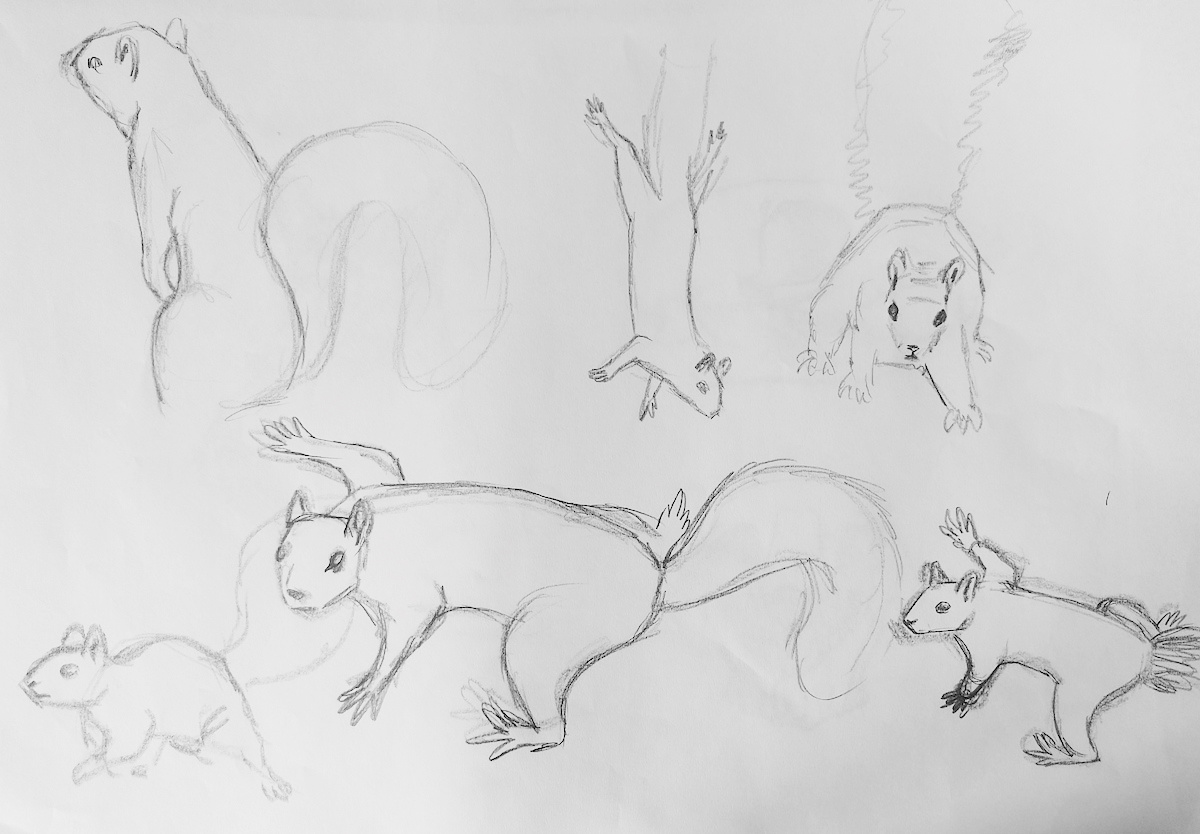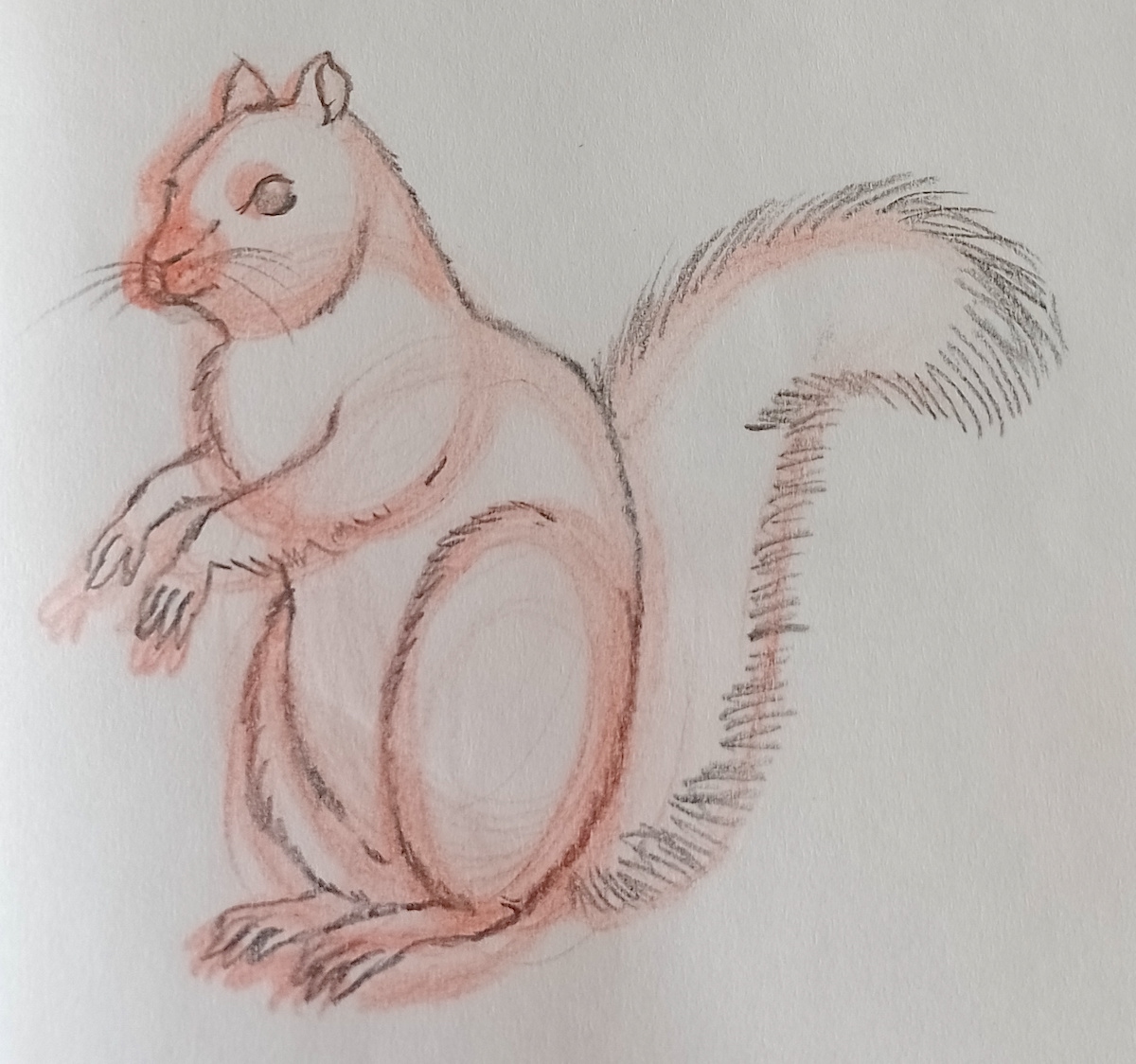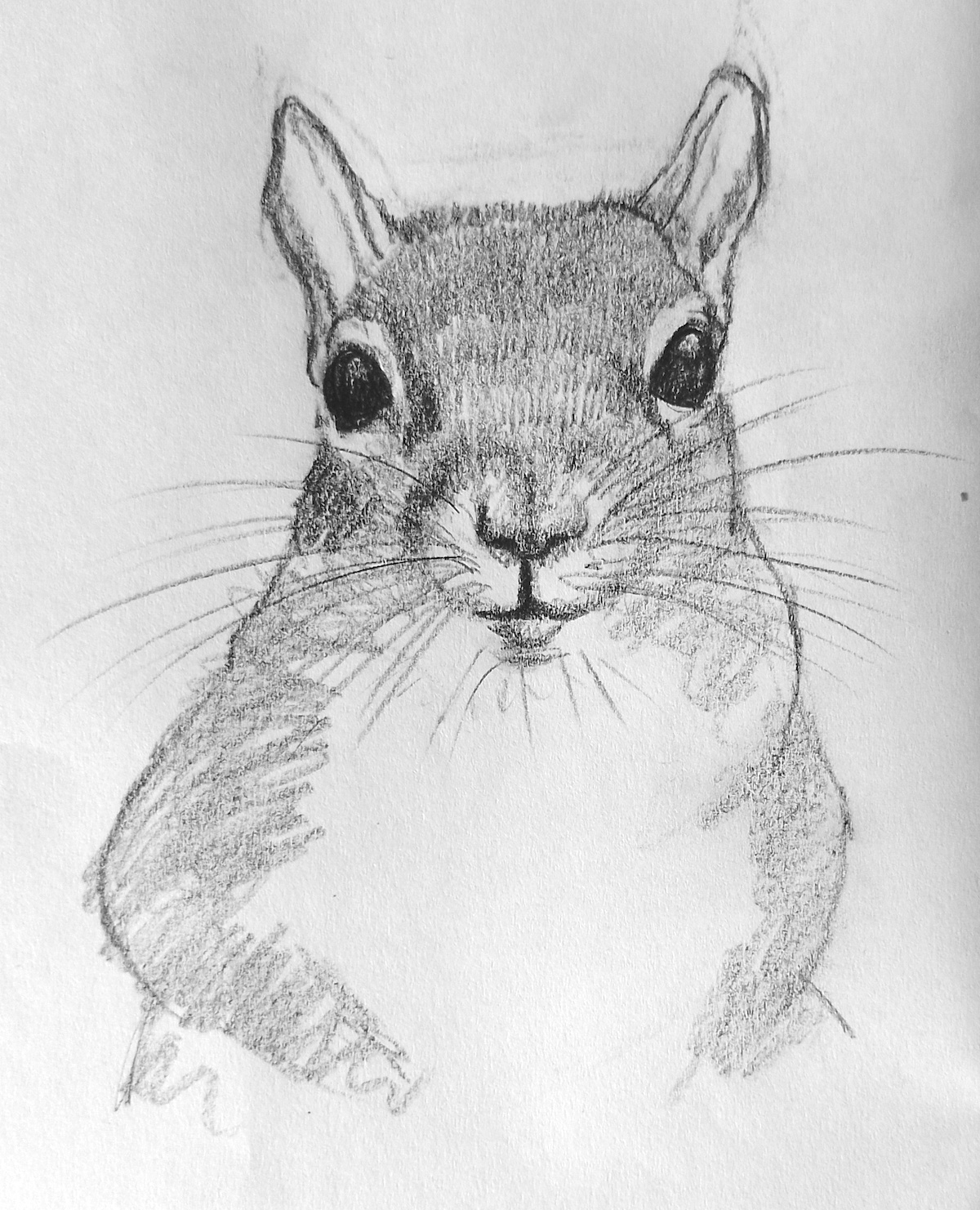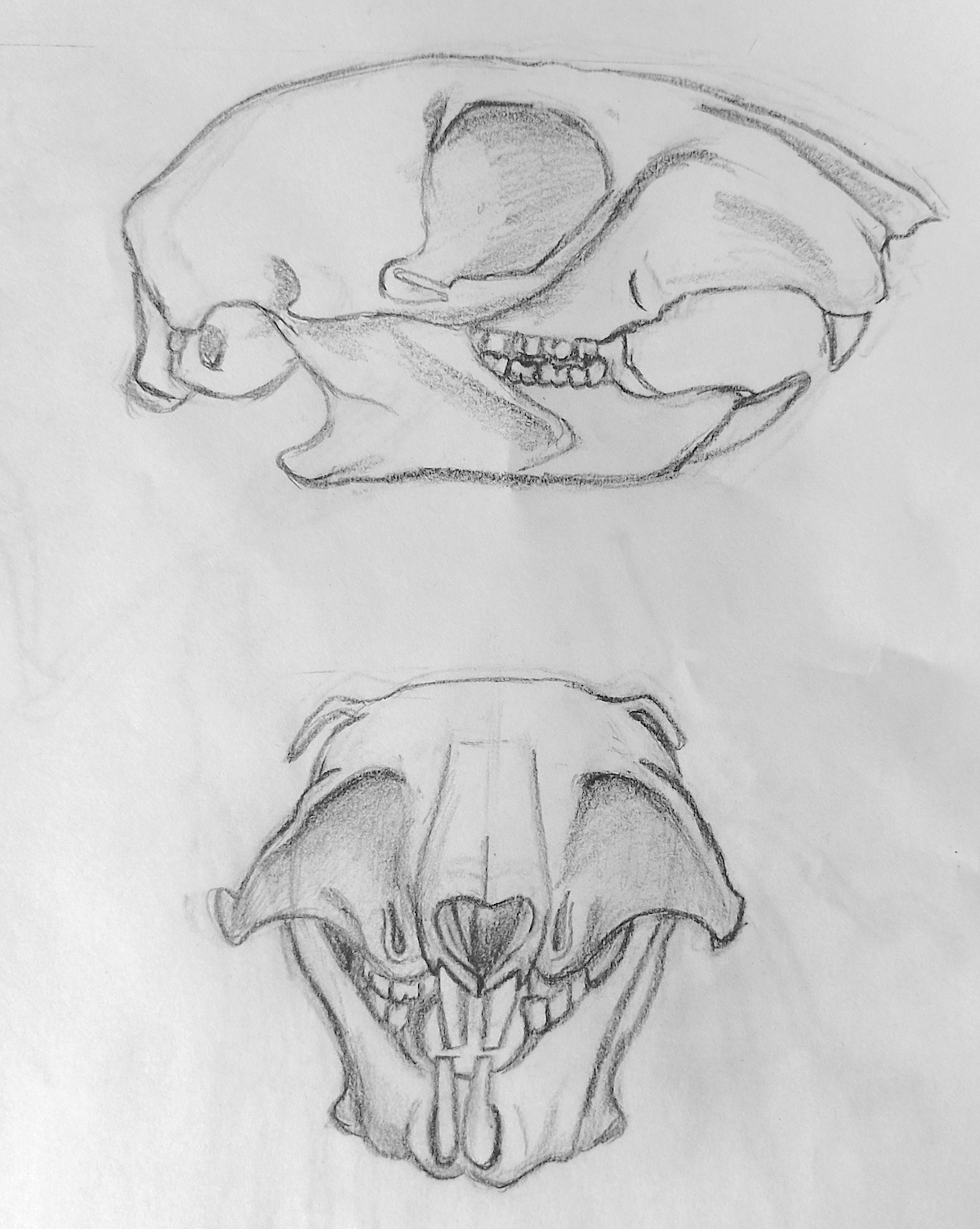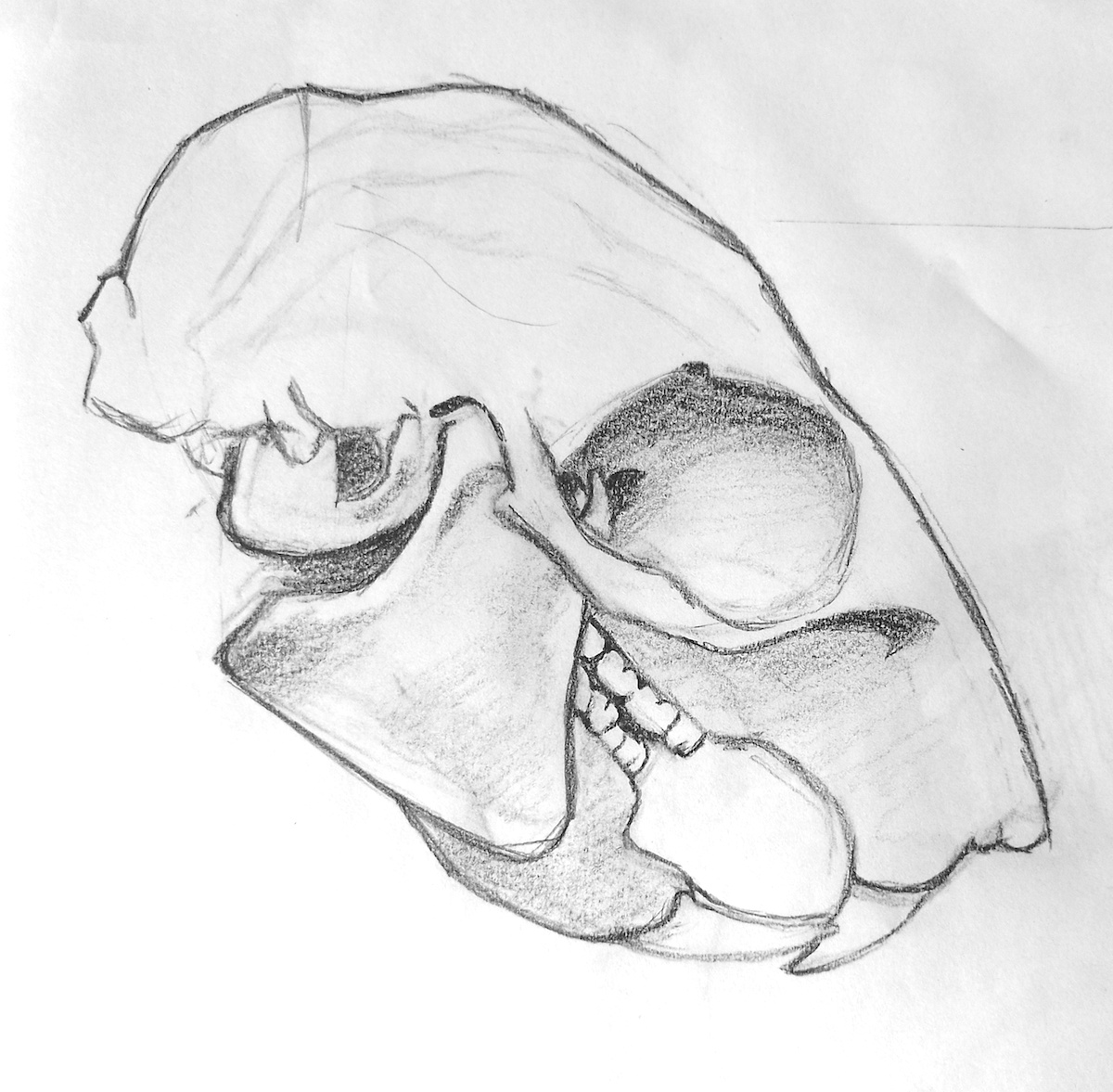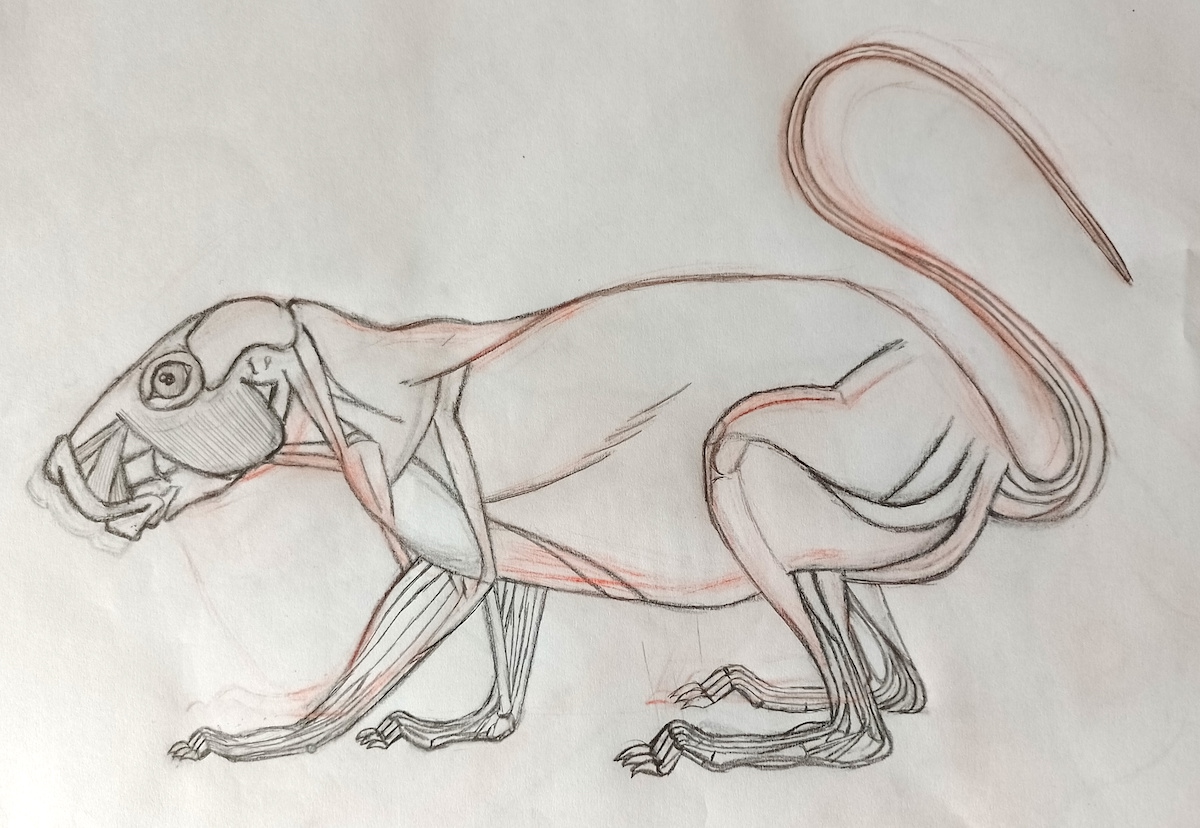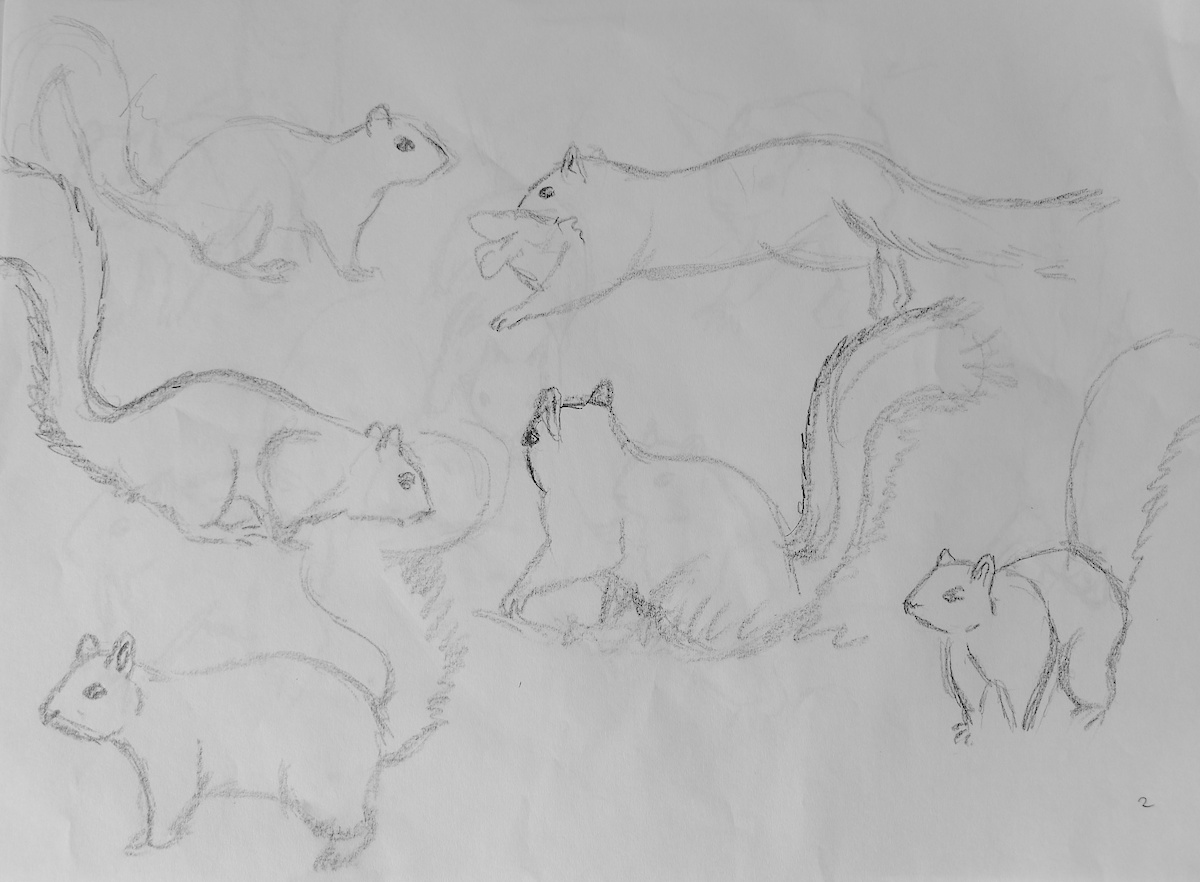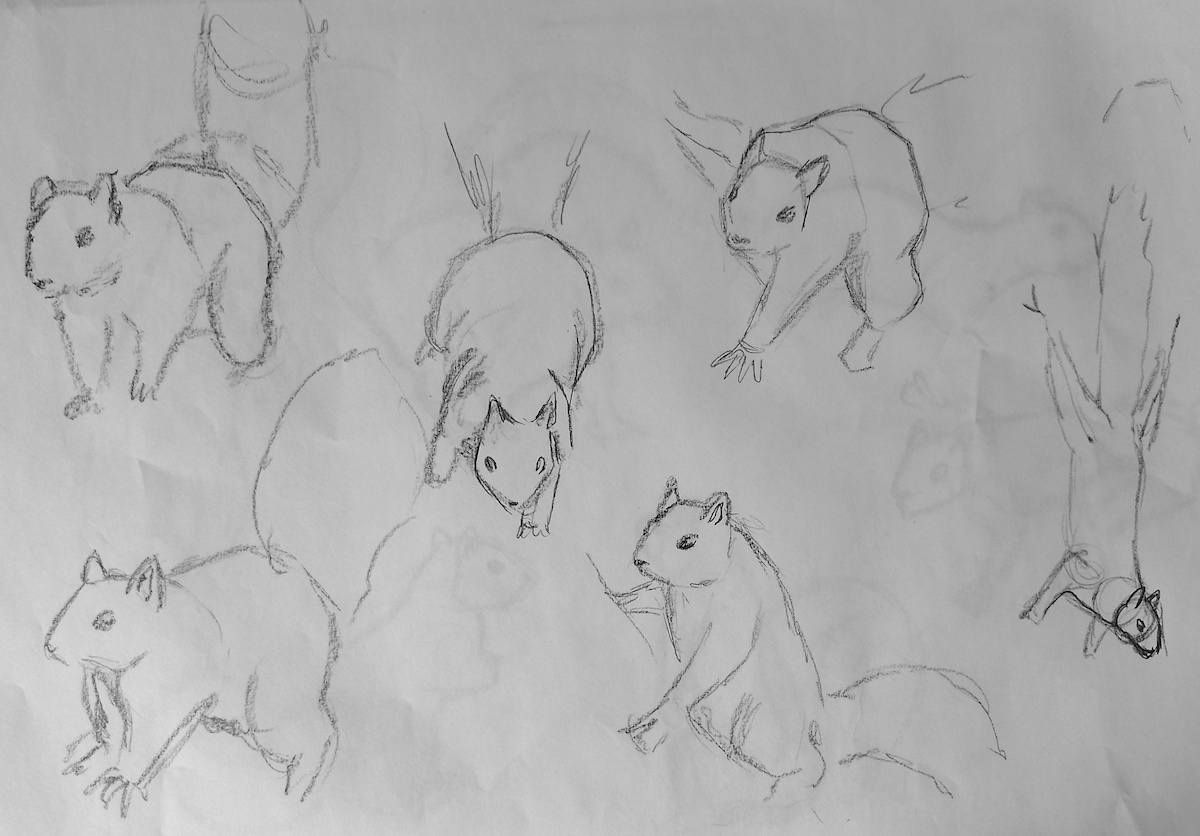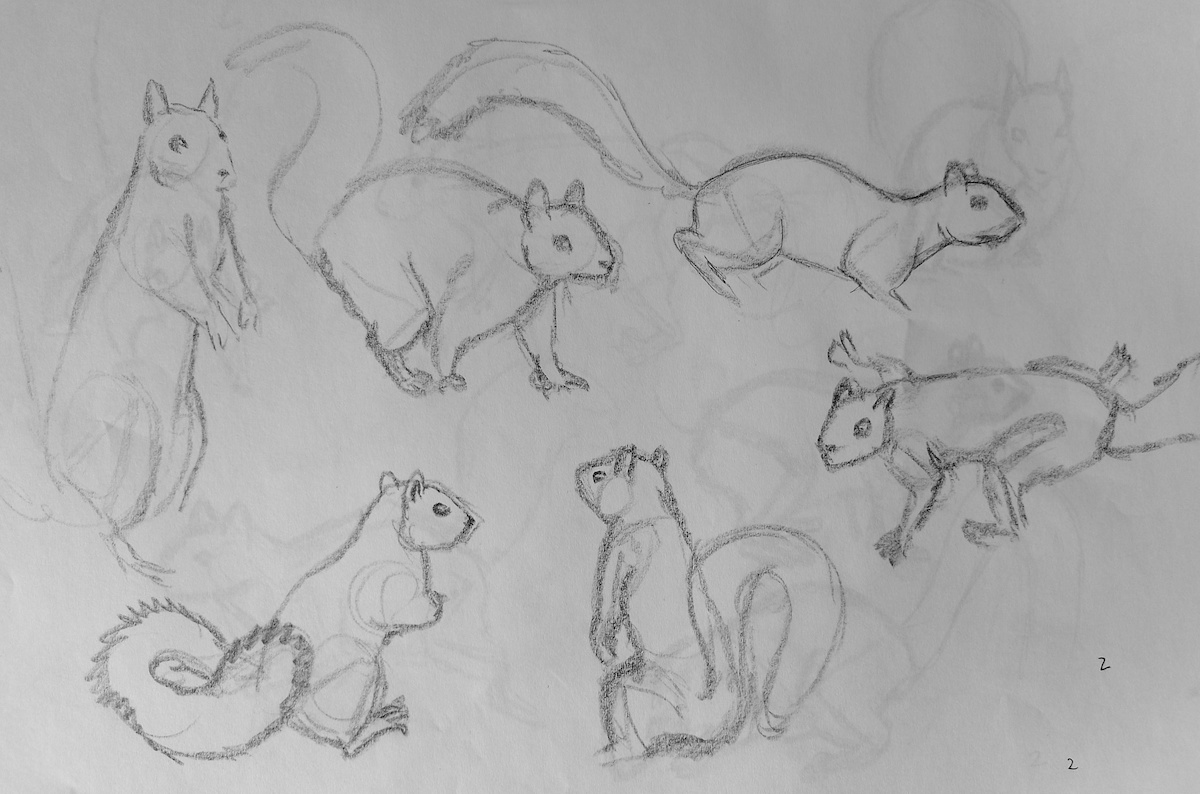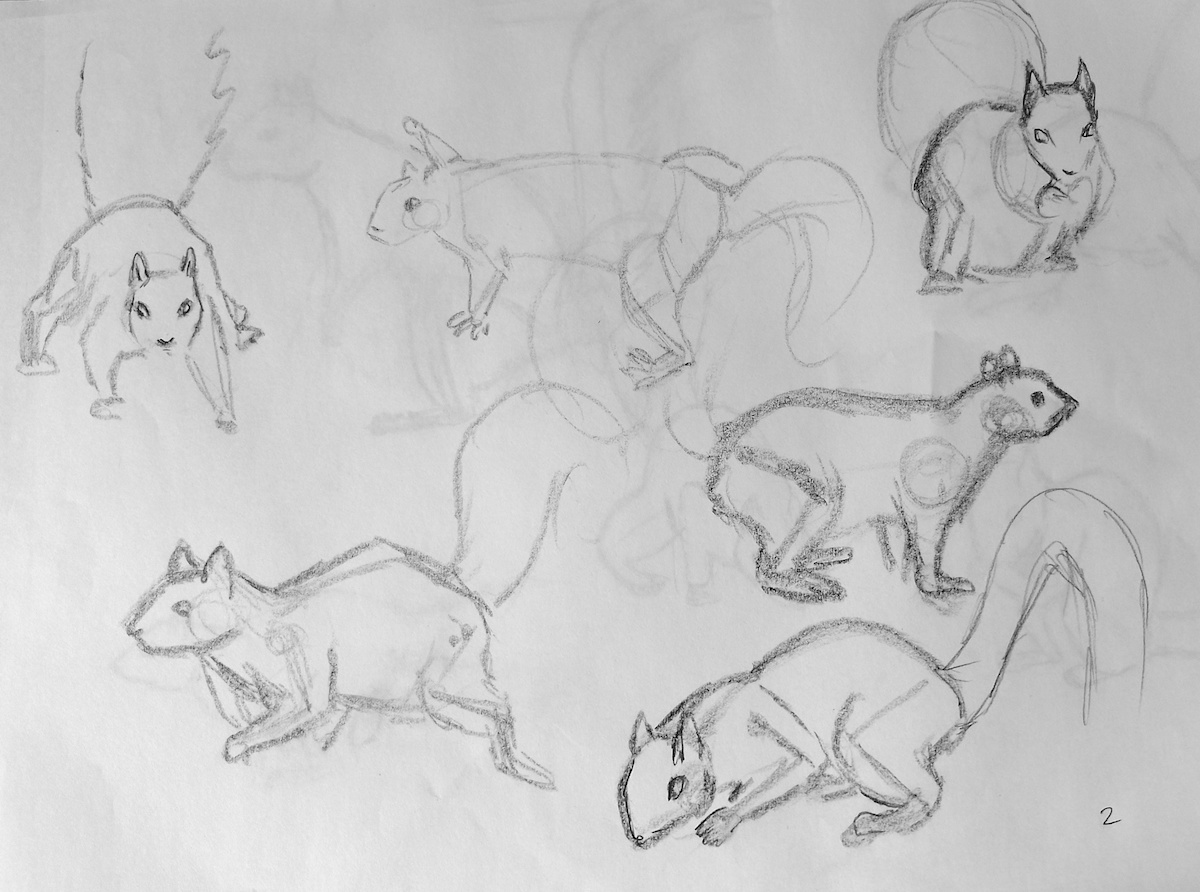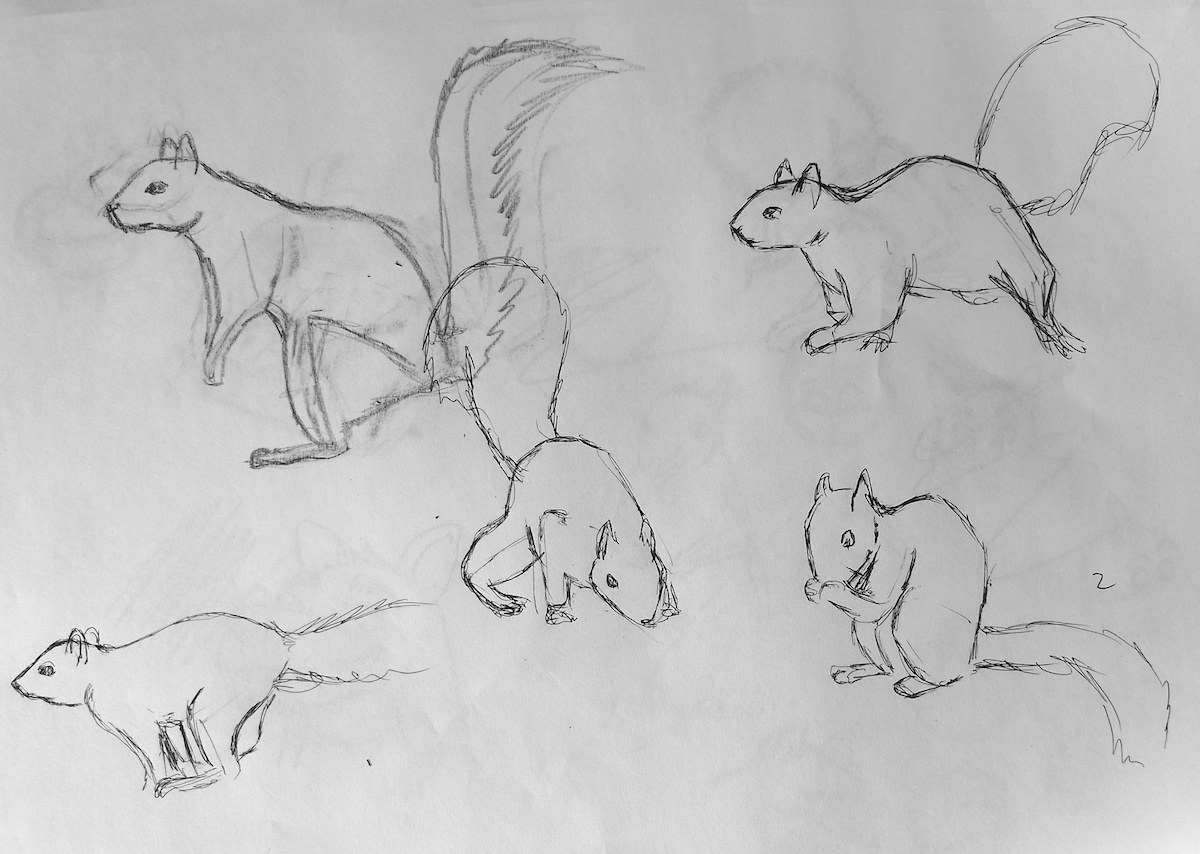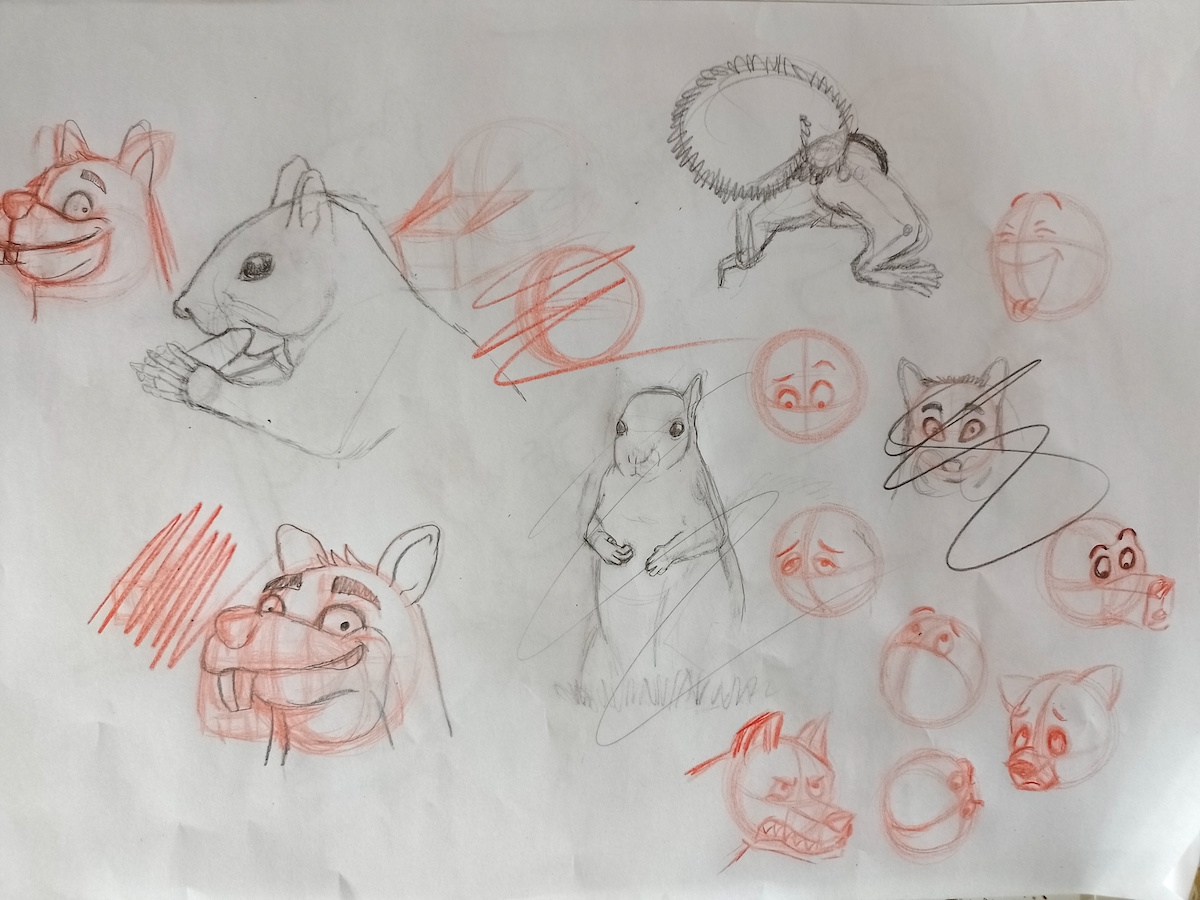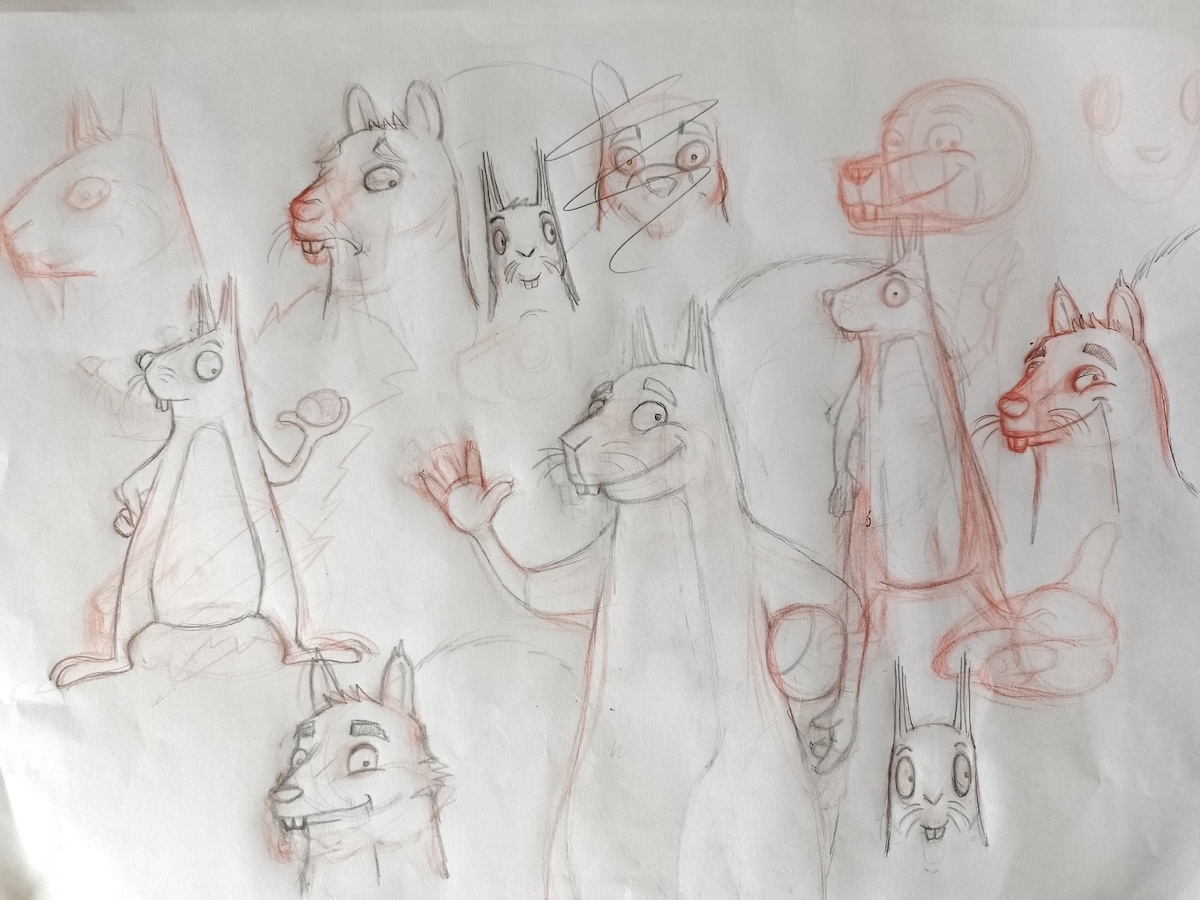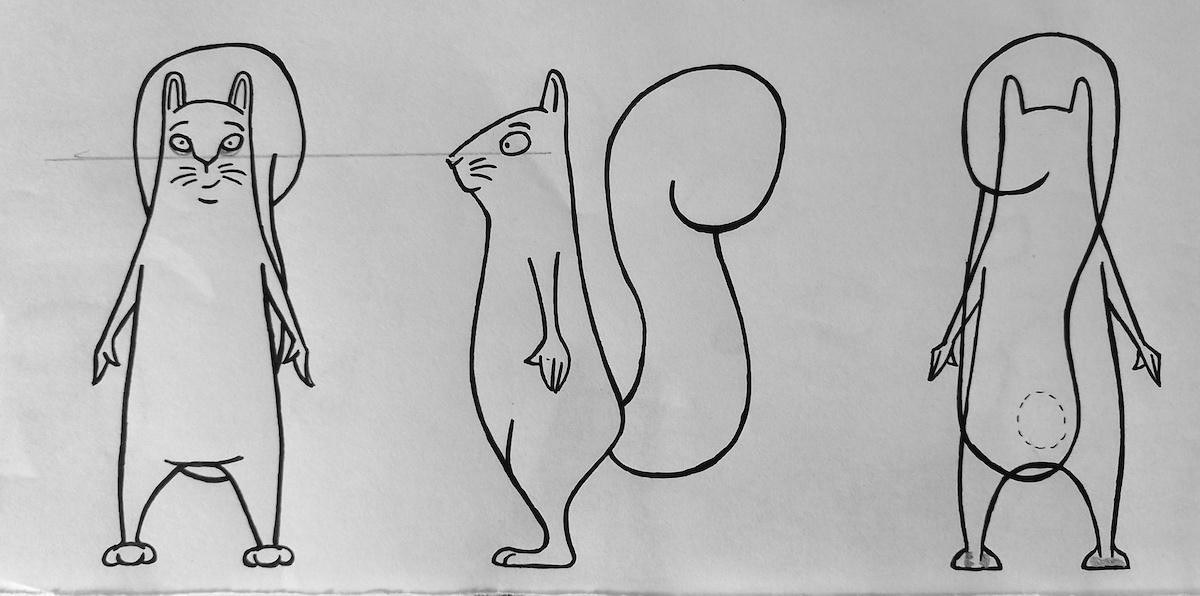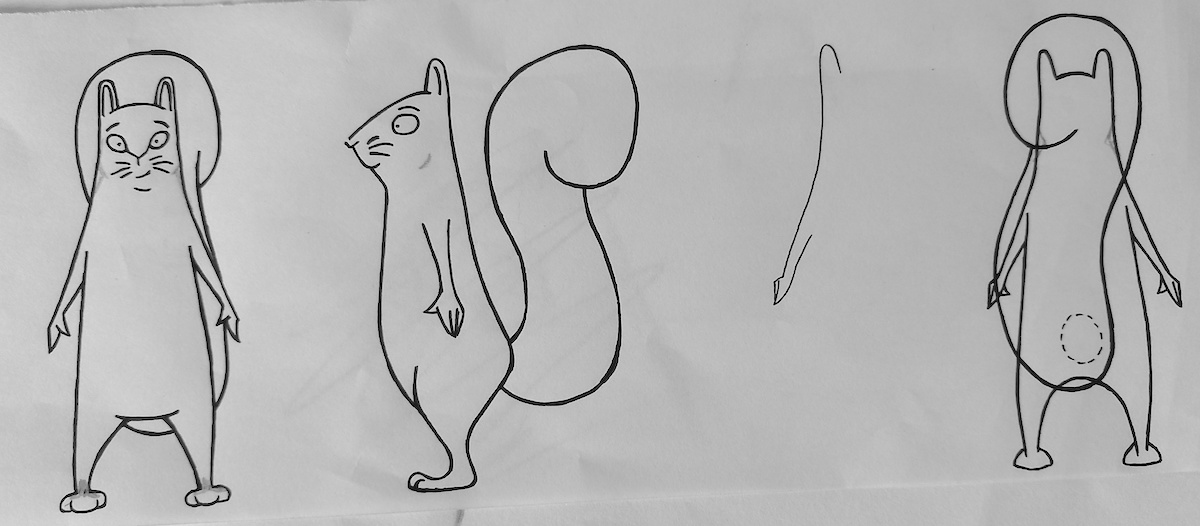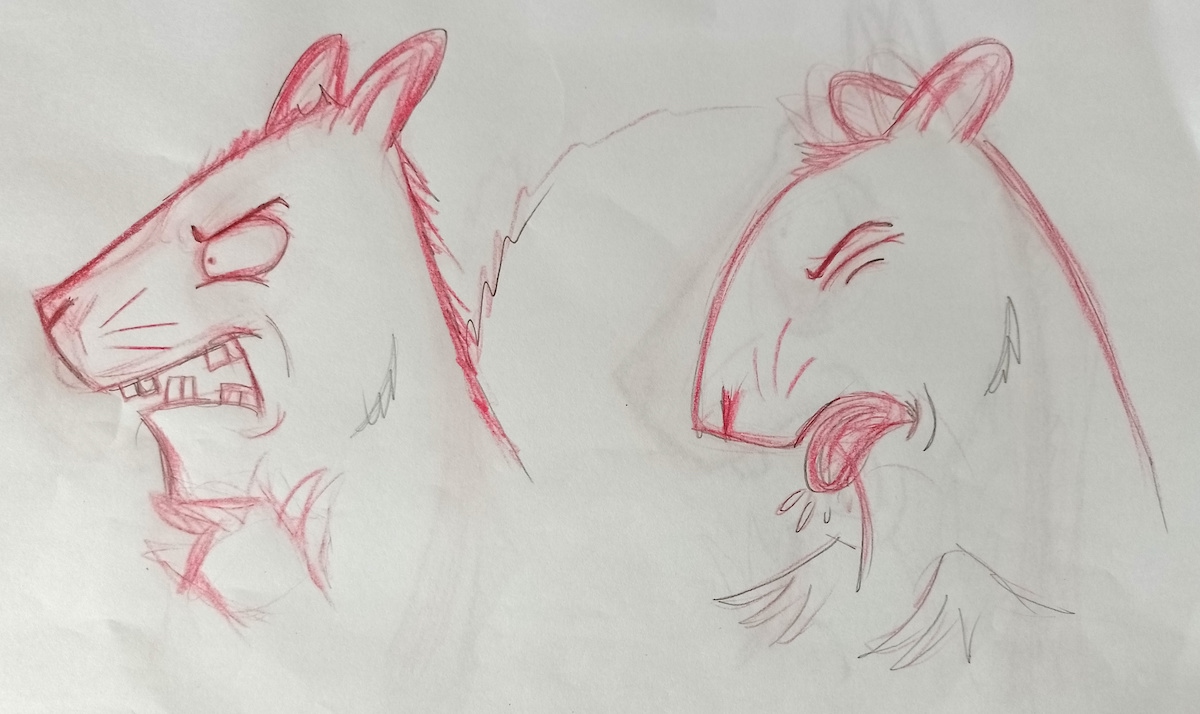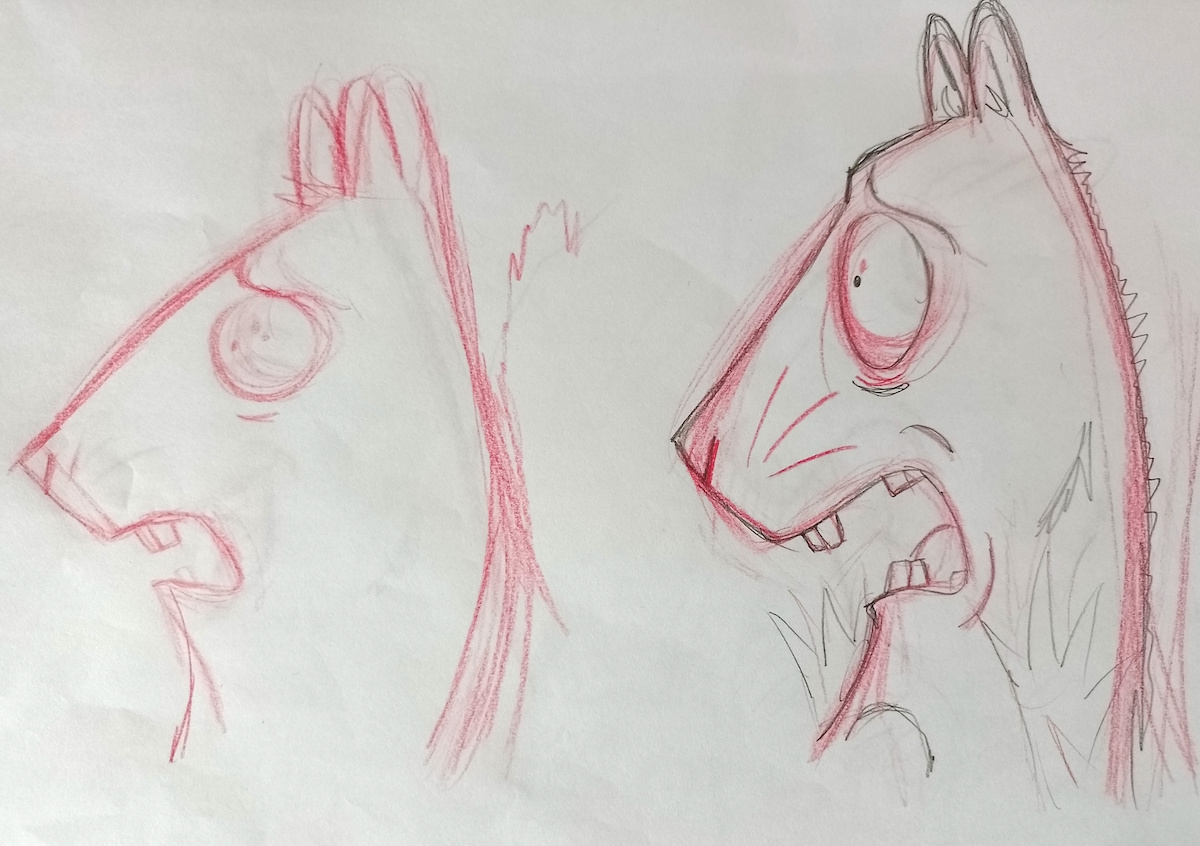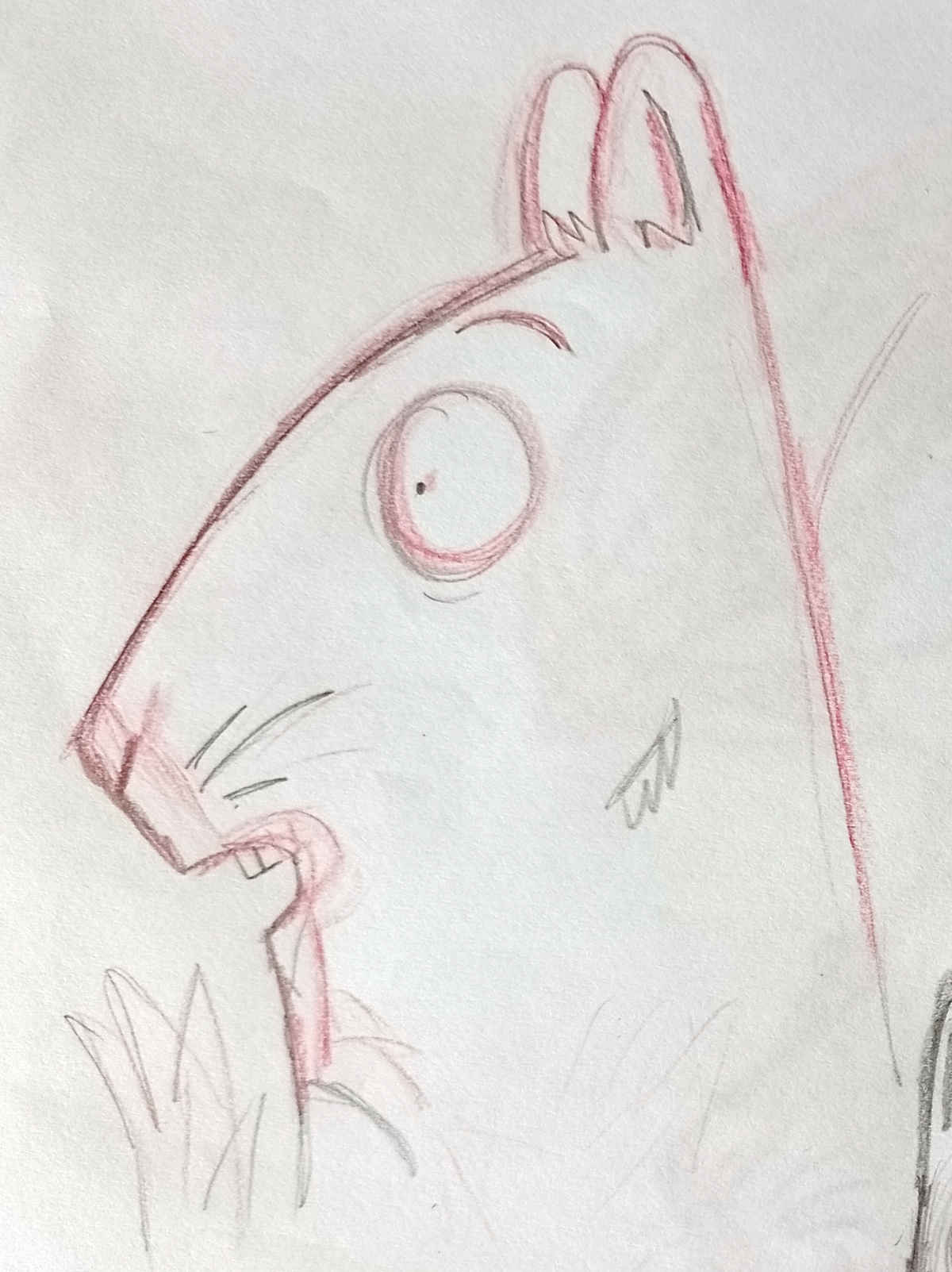Minnie Mouse, Danger Mouse, Tom and Jerry, Gromit, Watership Down, it’s often hard to name an animation which is about people rather than animals pretending to be people. The term anthropomorphism describes this process of superimposing human characteristics onto animals, and animation seems to do it a lot.
With this in mind, develop an animal character that is capable of showing a range emotions, movements and reactions to different situations. Come up with extreme examples such as ecstatic or terrified; though you might also want to work with mildly pleased or startled, it’s much easier to work with stronger emotions first of all. Explore what these expressions might look like extended into the body – ecstatic and hopping, terrified and running for example.
Develop a range of drawings showing your character from different angles, with different expressions and in different poses. You may want to develop some model-making as part of this exercise, using plasticine or exploring the options puppetry gives you.
Initial Thoughts
I had been looking forward to this exercise since the beginning of the unit, so, prior to starting, I had quite high expectations for myself. Anthropomorphism is the area of character design that probably appeals to me most of all (and any kind of character design is high up on my list of interests). As mentioned in the brief, there are countless examples of anthropomorphism in animation, but I decided to not refer to these at this point so that I would not be overly influenced by a particular style (e.g. Disney).
Choosing an Animal
One of my favourite animals is the squirrel. I find their athleticism so impressive as I watch them undertake unfathomable acrobatic feats. Plus, in my opinion, they are very cute. In terms of this exercise, I felt squirrels would be a good choice as their body shape and design (e.g. ability to stand on hind legs) are not too ‘un-humanlike’.
Two Minutes Drawings of Squirrels
Once I had made the decision of what animal I wanted to focus on, I undertook an hour of two minute drawings of squirrel poses uploaded by the incredibly useful Art Prof, which is one of the best online art resources I have come across.
Only having two minutes for each sketch was quite challenging, but it meant I did not have as much time to dither and had to just get on with putting marks down on paper. Once I had drawn a few of these I felt a bit more comfortable, but I did find that, although I was quite pleased with some of the drawings, I was fundamentally just copying the images and was unsure how useful this would be for creating a character version.
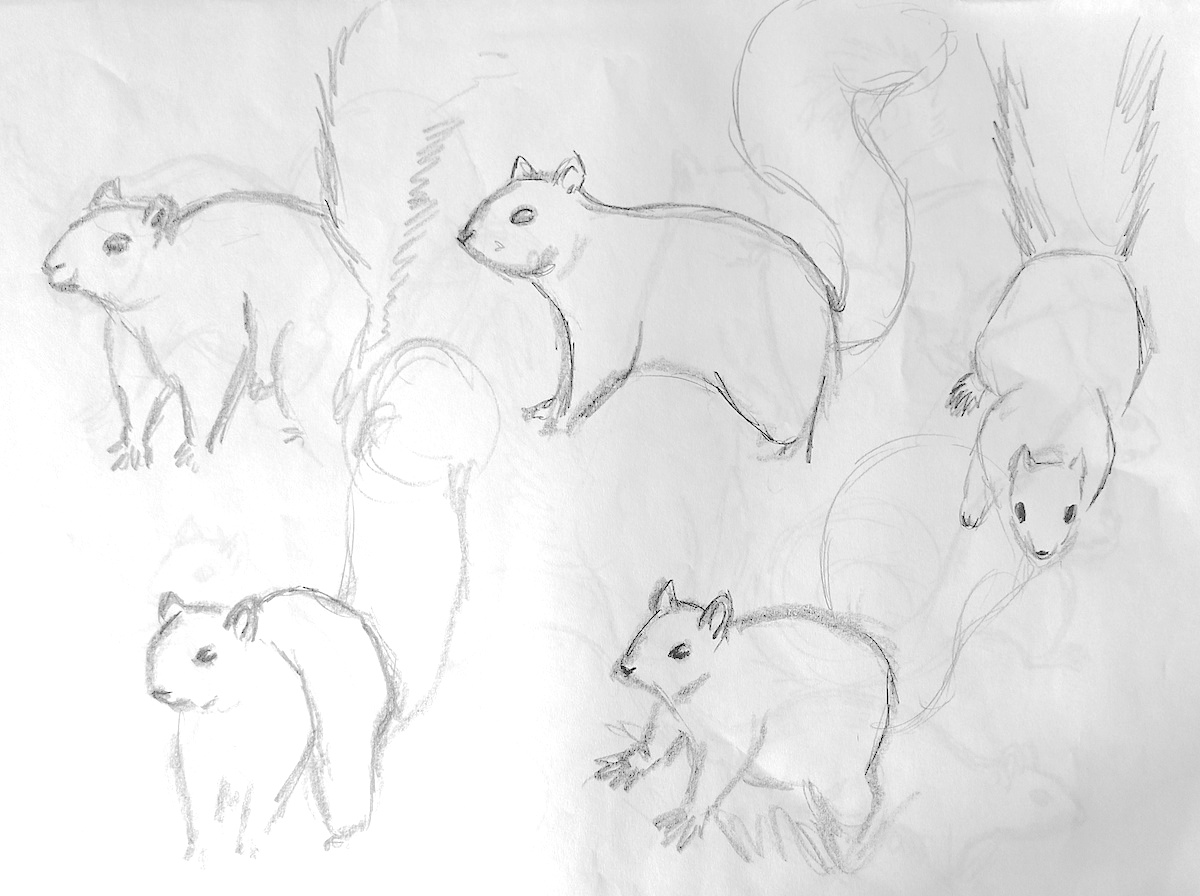
Before moving on I remembered I own the book Draw 50 Animals (1988) by Lee J. Ames (which is really aimed a children) and found it includes a squirrel as one of the examples, which I copied, as shown below. As with the previous drawings, however, I do not think this really helped me, apart from showing how the body could be simplified down to shapes, as I just copied what was on the page.
Additionally, I found countless number of squirrel images on Google, such as the one I drew below. Although I was fairly pleased with the result, it still did not make me feel any more confident in terms of this exercise.
Character Design Tutorial
I felt that I needed some guidance with how best to proceed. As mentioned in the previous exercise, I am quite a fan of Aaron Blaise’s tutorials. When I searched on Google for a character design tutorial, one of the first results was a Cartoon Brew article by Blaise, which included a 45 minute YouTube video.
As with some of the other videos on character design by Blaise that I have previously watched, he states that researching the animal and having an understanding of their anatomy is vital before even attempting to create a stylised version. This is the case when drawing humans as well, but I guess a little part of me was hoping a character would magically just come out of the end of my pencil…
Squirrel Documentary
One of the problems with opting for a squirrel is that I do not have constant access to one that I can draw from life. I have not seen any life drawing sessions with squirrel models advertised, so I could only get fleeting glimpses of them outside. I also realised that I do not actually know that much about squirrels, so I decided to watch yet another 45 minute video, this time a documentary called Nuts About Squirrels (2017). I learnt some interesting facts about squirrels, such as their ability to rotate their back feet 180 degrees so they can keep it flat on the bark as they travel up and down trees.
After watching the documentary I felt much more informed about squirrels in general.
Anatomy of Squirrels
Surprisingly, I do not have a squirrel skeleton in my closet, so once again I had to find sources online. I found a website called Jake’s Bones, which has a selection of animal skeletons, including a squirrel, but the images are quite blurry. I decided to draw the side and front views of the skull.
I then found (another) YouTube video which is a slow pan over the side view of a squirrel skeleton.
Although only a side view of the skeleton, I found this video really helpful and it resulted in a much more successful drawing as shown below. It would have been even more beneficial if the camera could have zoomed out so you could see the entire skeleton at some point.
I felt I was becoming slightly more informed of the underlying structure of a squirrel. I found the mouth area particularly fascinating as I had never considered the positioning of the teeth and the powerful jaw bone for biting down on hard nuts.
I used this video, along with a computer generated 3d model of a squirrel skeleton that I found on 3D Horse, to draw the bones of the body. I also did close up drawings of the front and hind feet, as these looked really complicated. These can be compared to human hands/feet (which are also very difficult to draw), as with the entire skeleton, it’s just that the bones are different in length and/or in a different position. I found it interesting how the spine became much thicker at the base so that the powerful muscles of the hind legs and the tail can attach to the spurs.
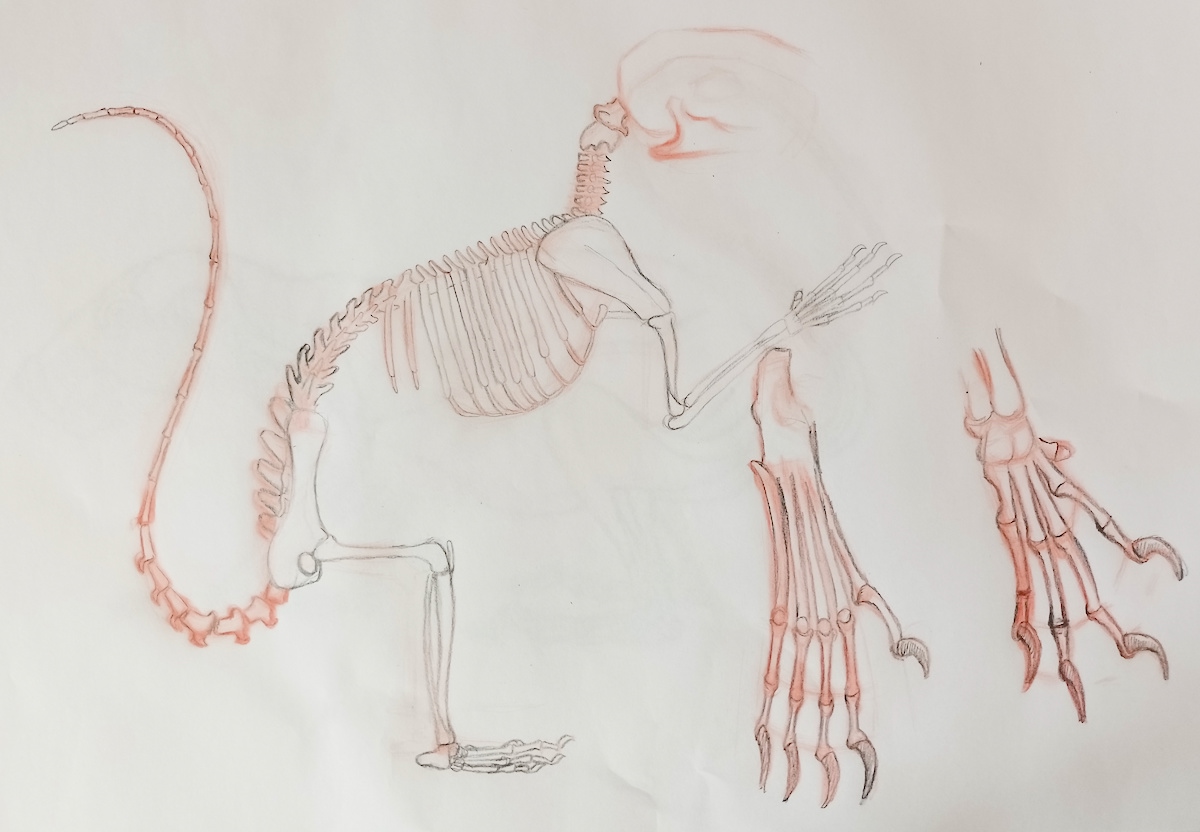
(Click on image for larger version, opens in new tab).
Next, I moved onto the muscles of the squirrel using a Pinterest image as reference.
I then found another image on Pinterest, which shows the skeleton within the outline of the squirrel’s body. It would have been useful to have had this resource earlier in the process as it is such a clear image. I drew the main elements of the squirrel skeleton, but it was most helpful drawing the surrounding mass of the squirrel so I could see it all in context.
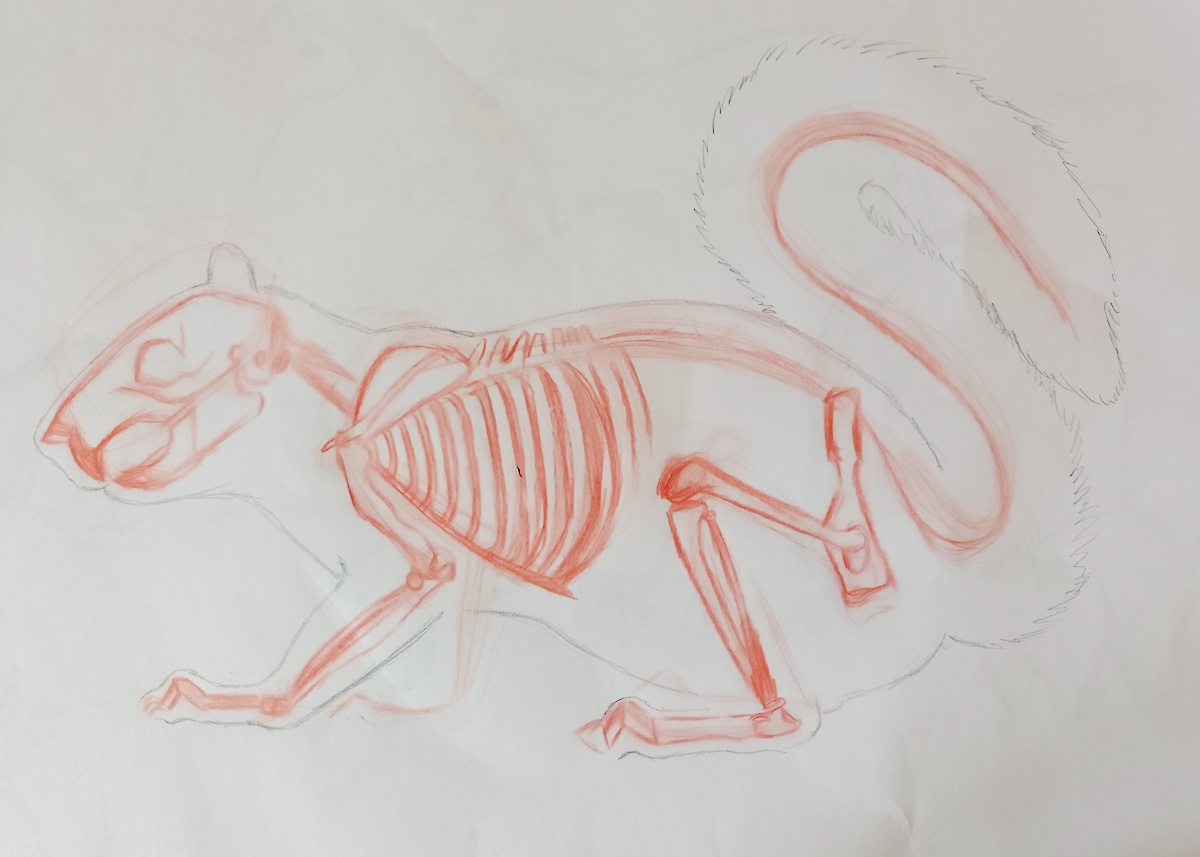
(Click on image for larger version, opens in new tab).
Second Round of Two Minutes Drawings of Squirrels
Now that I had spent some time trying to understand the anatomy of squirrels, I decided to revisit the two minute drawing exercise and see if there was any improvement.
As I undertook this task again, I did notice that rather than simply copying the image, I was starting to contemplate the location of the underlying bones (and to a lesser degree, the muscles) in each pose. I think these drawings show a great improvement on the original versions, but I still found the process incredibly challenging, particularly having such a short amount of time for each one.
I had spent a significant amount of time on this exercise so far and I had not even started designing a character! I was becoming increasingly anxious about how much time I had spent this unit so far (especially after the reminder email from OCA), so I thought I should get on with it.
Character Ideas
I decided to collate some examples of animal character design, focusing on squirrels (or rodents, in general), creating a Pinterest board. I also looked at Pixar’s page about the making of the film Ratatouille (2007), which I am not sure whether this was helpful or just plain intimidating! In the example below, it is clear to see how confident the Pixar artists are in their draftsmanship, with strong lines, and the personality of Remy is clearly communicated by his body language and expressions.
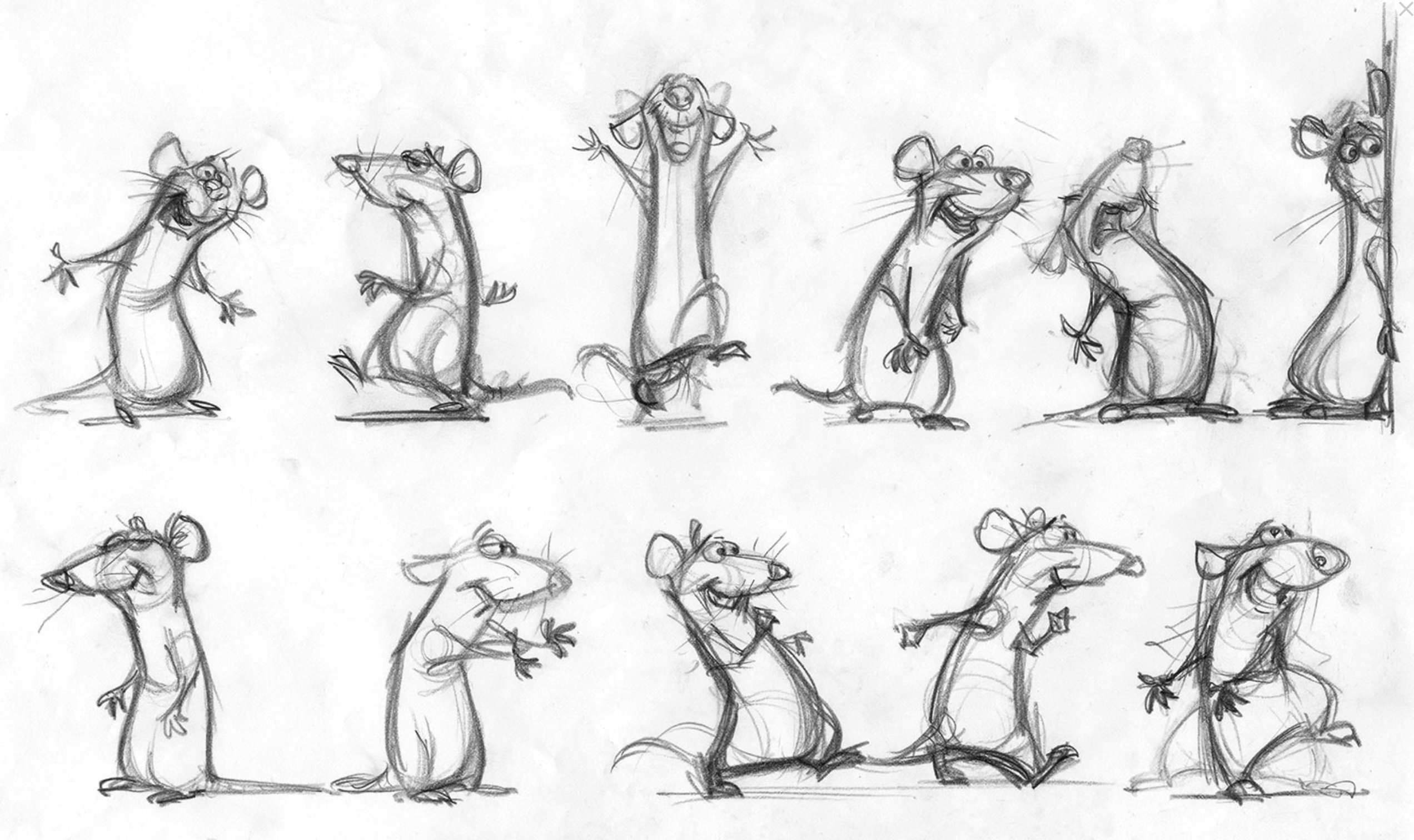
Source: Pixar.
Using A3 layout paper, I sketched out some initial thoughts for a character, most of which looked like dogs, not squirrels. This is because I was practicing drawing dogs (bottom left), which then influenced my attempts at drawing the squirrels.
Eventually, after much frustration, I came up with two potential versions of the squirrel that seemed the best of the lot. As seen below, the large squirrel in the centre waving and the squirrel on the left holding a nut, with a big eye.
In hindsight, I probably selected the worst of the two options – the big-eyed squirrel on the left…
Turnarounds of the Squirrel
I decided to create a turnaround of the character, which is much easier said than done. I cannot describe the amount of rubbing out that took place during this process! The side view was not too complicated, but the front view took absolutely ages – I could not get the eye/nose area to look right. I had to reduce the eye size and change the shape from circular to more oval as the former made him look like he’d had too much caffeine. Eventually, I had to be settle with what I had, although I was not happy with the hands or feet.
Using a light box, I drew out a version using a fineliner.
And another.
I still was not happy with the front view. I tried to alter this, as shown below, but this was worse. It looks like the squirrel is completely blank and spaced out. I did not know how to remedy it and I was becoming too caught up in this issue, getting quite frustrated. If I moved the eyes closer together, as in the Pixar example, the side view would no longer work, plus it looked peculiar from the front anyway!
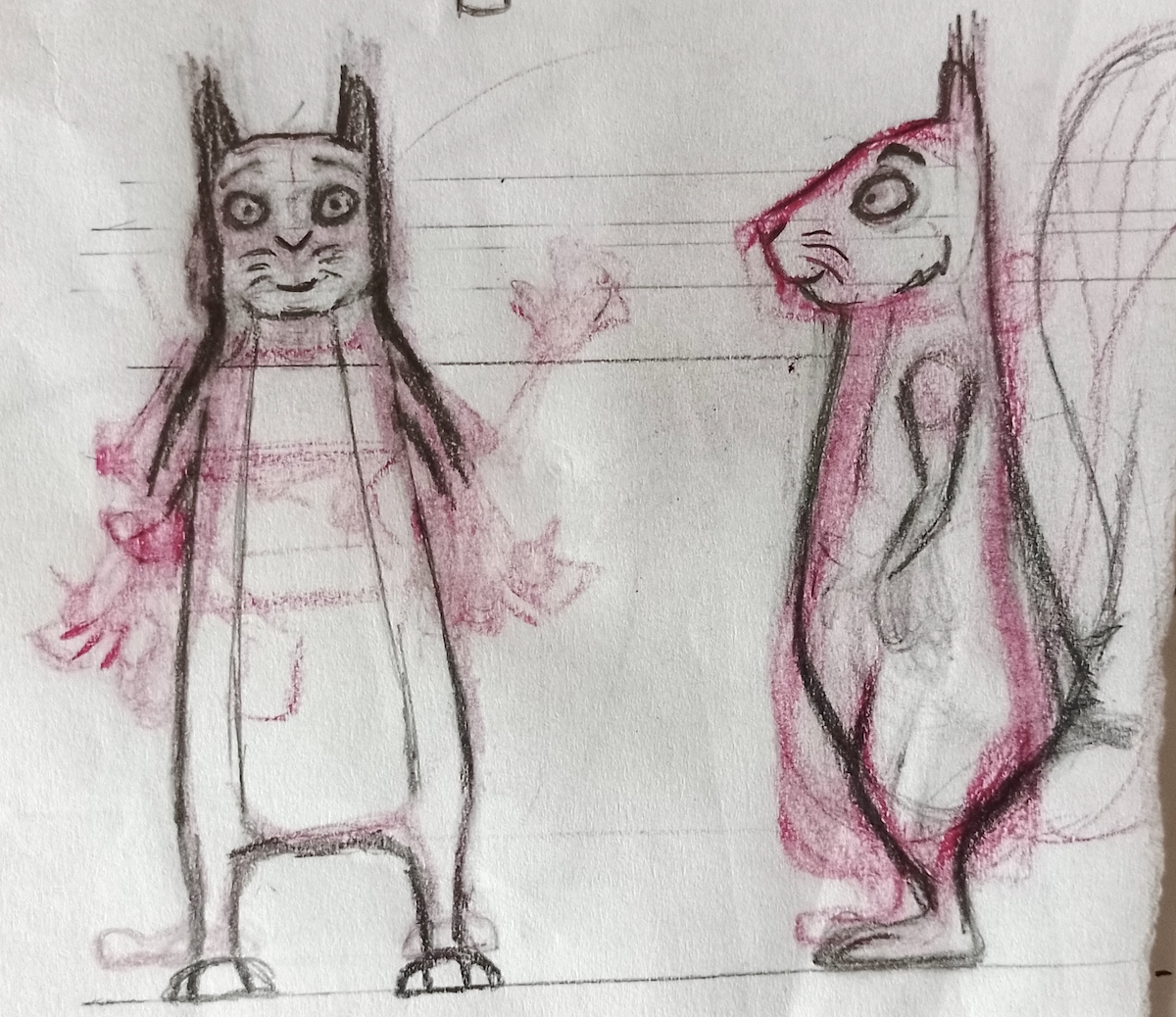
(Click on image for larger version, opens in new tab).
Experimenting with Expressions
I made the executive decision to move on and see what I could do with expressions. I used Scott McCloud’s book Making Comics (2006) as reference for six of the more extreme expressions, as suggested in the brief. I copied out the versions in the book, which are based on a human face. It is quite fascinating how expressions can be so extreme or, at the other end of the scale, subtle. On a side note, the selection of expressions below aptly describe all the emotions I went through during this exercise!
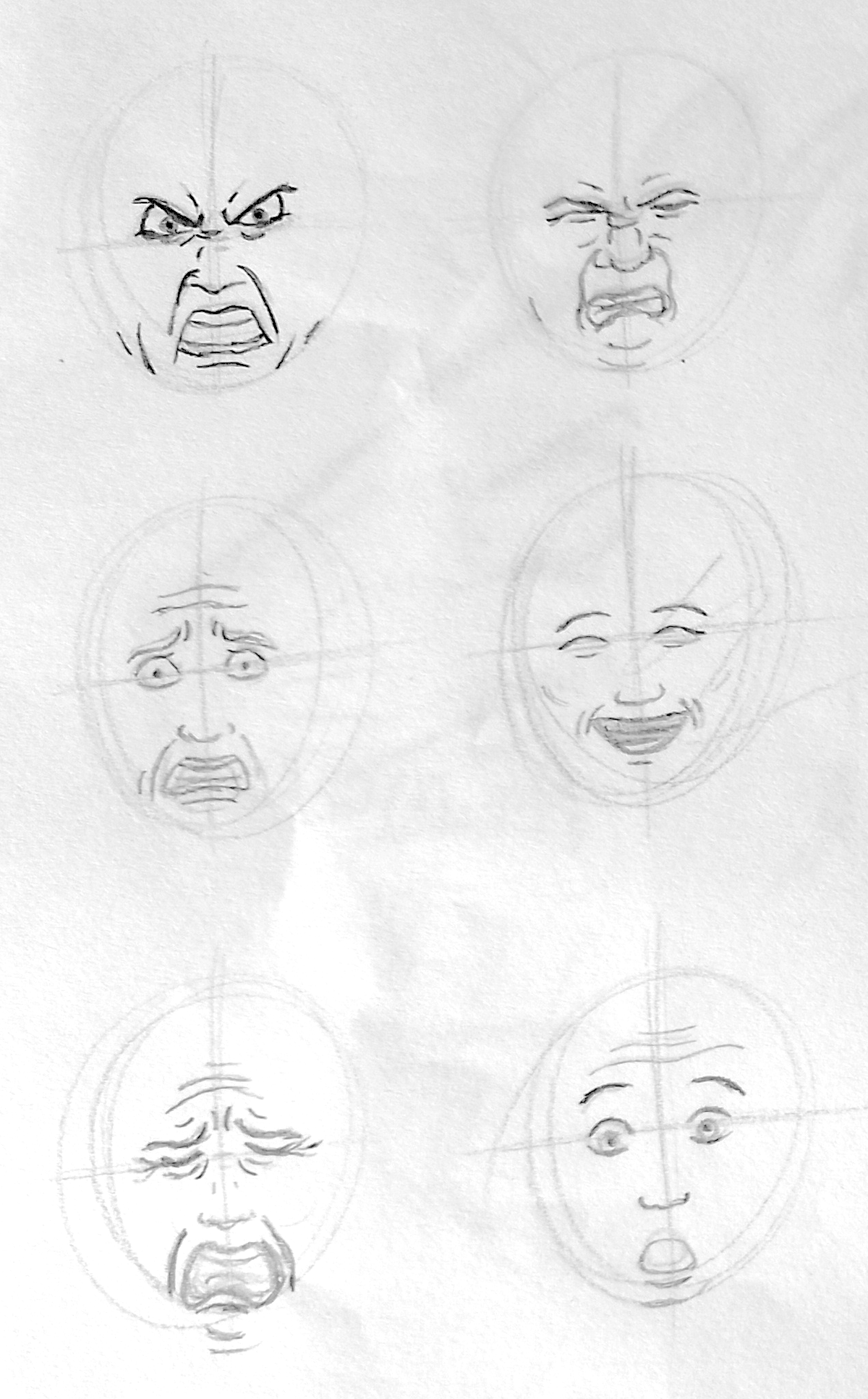
(Click on image for larger version, opens in new tab). Source: Making Comics.
As I was having such issues with the front (not to mention my attempts at 3/4 views) I chose to use a side view to experiment with expressions. At this point in the exercise, I think I really just wanted to get to the end, so I actually felt quite free when drawing, using larger strokes with the pencil, and my lines seemed looser.
I particularly liked the ‘disgust’ drawing below as it quite clear what the squirrel is feeling.
With the ‘terrified’ expressions, my initial attempt was too tame so I stretched the squirrel’s head in an exaggerated way and the outcome was more successful.
I found that bending the nose, whiskers and ears helped enormously when trying to portray grief, for example.
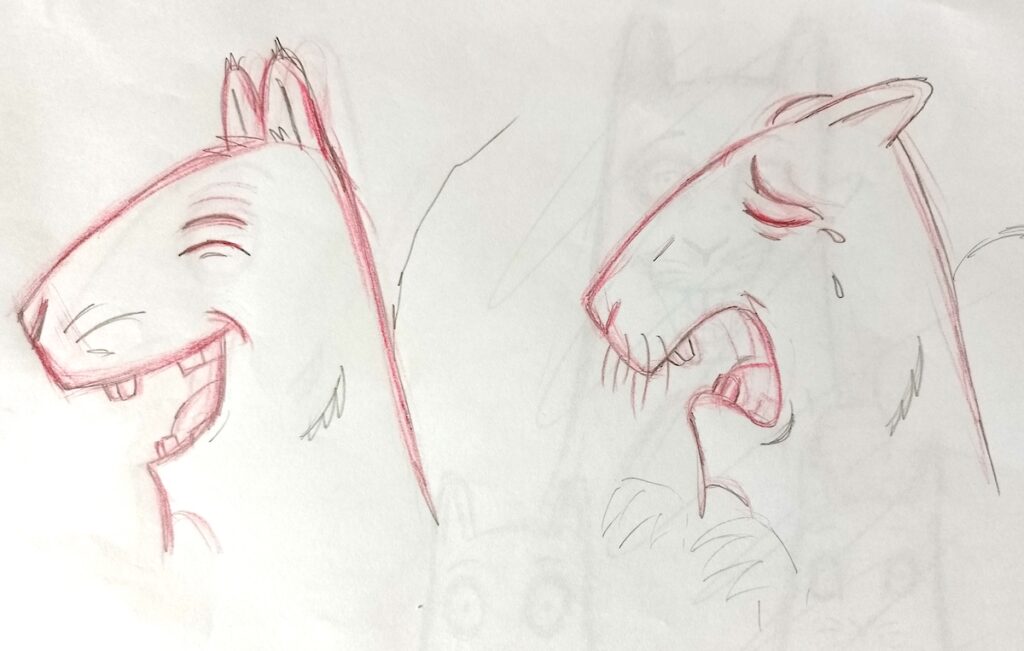
(Click on image for larger version, opens in new tab).
I thought I managed to portray the six expressions of the squirrel fairly well – I believe they are readable as intended. However, I had become slightly obsessed with the front facing view and so instead of experimenting with expanding these expressions into body language as I should have, I returned yet again to fiddle around with drawing the squirrel’s head face on.
The Recurring Problem of the Front Facing Squirrel
I was quite pleased to learn that a few years go there was an internet craze about how creepy and/or peculiar characters from The Simpsons looked when seen face on, which explains why they are rarely shown from this angle.
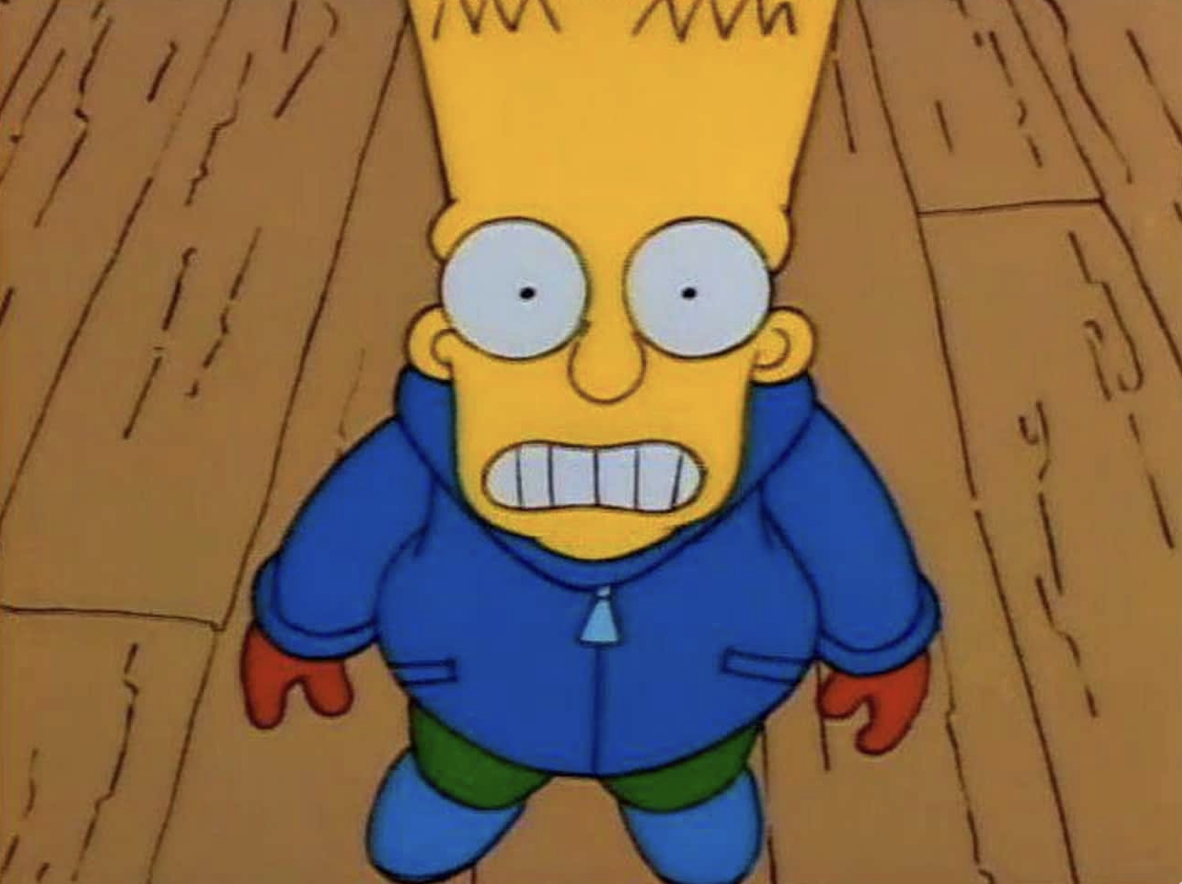
Source: Ranker.com
No matter what I tried, the squirrel just did not look right!
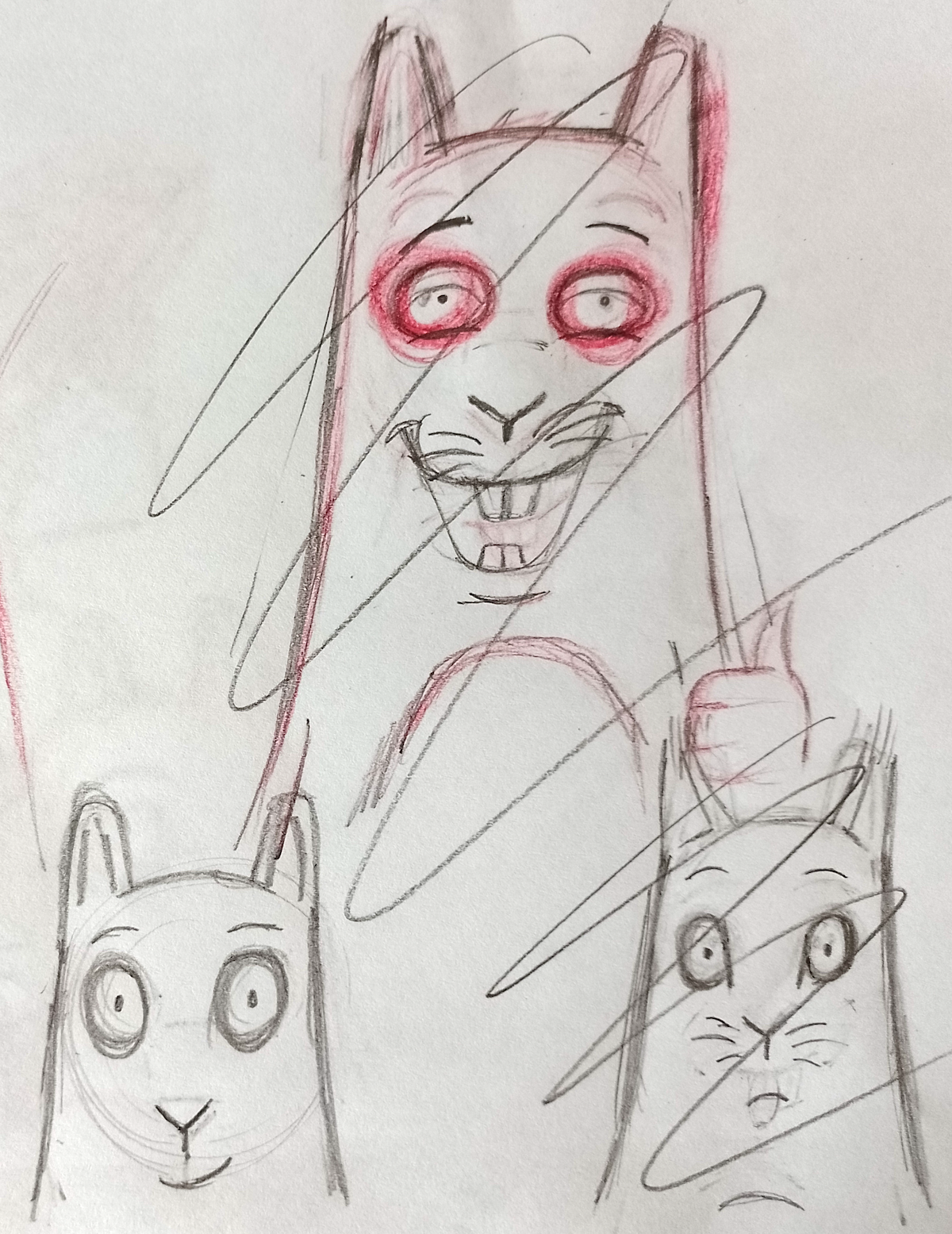
(Click on image for larger version, opens in new tab).
I tried reshaping the head, which looked slightly better, but I just came to terms with the fact I must picked the wrong option from the sketches in the initial idea phase.
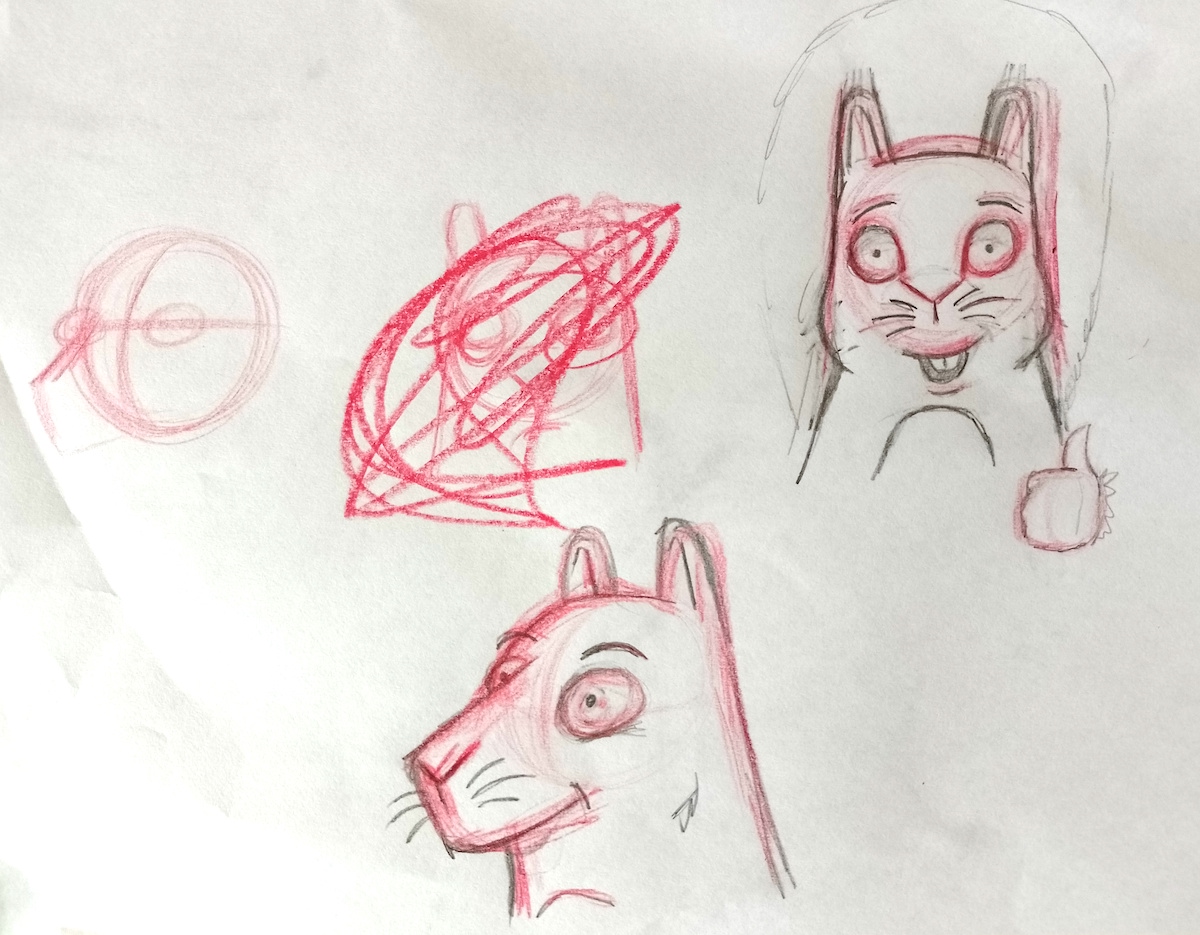
(Click on image for larger version, opens in new tab).
I could just about manage to turn the head at a slight angle, as seen below……but he more the head turned, the more odd the squirrel looked.
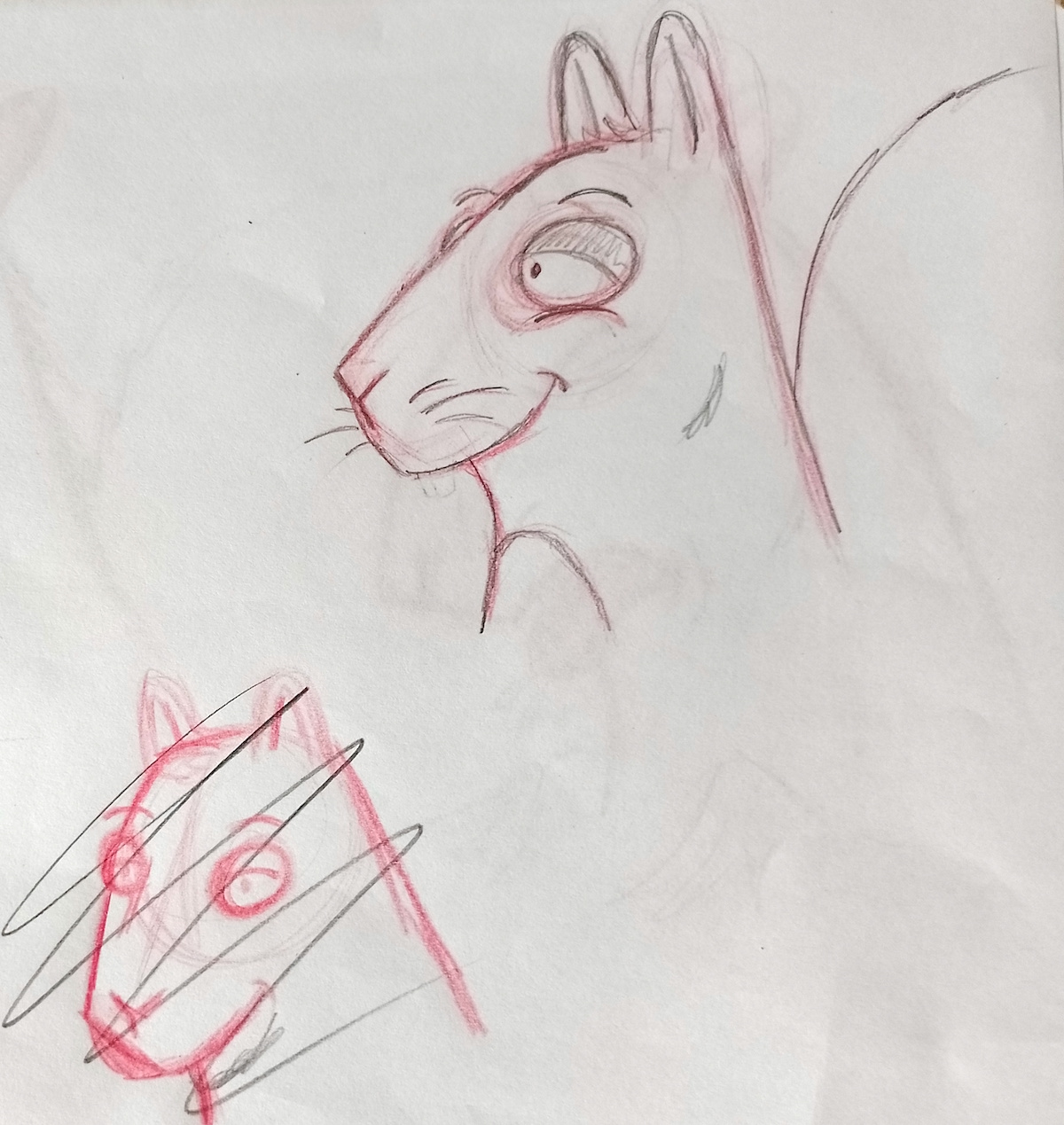
(Click on image for larger version, opens in new tab).
Final Thoughts
I really was not ready to move on from this exercise, but I had already spent a great deal of time and effort on it. I did not feel I had reached a satisfactory conclusion and I had not sufficiently fulfilled the brief – I did not even get to experiment with colour. I was extremely disappointed with what I had achieved.
Despite these reservations, I feel there are some positives I can take from this exercise, namely that I now have a clearer understanding of the process of designing a character. I would go so far to say that my efforts in the first half of this exercise were generally successful and I thoroughly enjoyed learning about the anatomy and characteristics of squirrels. My issues really started once I had to transition from the real to the make-believe.
When looking at the examples of the Pixar character designs, they portray such vitality and personality, whereas my attempts look soulless in comparison. I do realise that Pixar is considered to be among the crème de la crème, but that did not lessen my disappointment at all!
To end on a positive note, I know there are some 2D animations, particularly those aimed at very young children, which only ever show the side view of characters. I was quite happy with this angle of my squirrel and I felt the expressions worked well in this format as well, so perhaps he could star in his own pre-school animation.
Bibliography
3D Horse (n.d.) Squirrel Skeleton 3D Model. Available at: https://www.3dhorse.com/products/squirrel-skeleton-3d-model (Accessed 11 July 2023).
Ames, L.J. (1988) Draw 50 Animals. London: Kingfisher.
Art Prof (2023) Welcome – Art Prof. Available at: https://artprof.org (Accessed 9 July 2023).
Art Prof: Create & Critique (2022) Timed Drawing Session Practice: Squirrels, 2 min. Poses. Available at: https://www.youtube.com/watch?v=fGY5M-NFGac (Accessed 9 July 2023).
Cartoon Brew Connect (2017) Aaron Blaise Reveals The Seven Steps to Great Character Design. Available at: https://www.cartoonbrew.com/sponsored-by-aaron-blaise/aaron-blaise-reveals-seven-steps-great-character-design-149504.html (Accessed 9 July 2023).
Creative Bloq Staff (2013) Top 40 character design tips – Part 1: Animal based characters. Available at: https://www.creativebloq.com/animation/top-40-character-design-tips-part-1-animal-based-characters-5132659 (Accessed 9 July 2023).
Gomes Cabral, C. (2013) Cartoon Fundamentals: The Secrets in Drawing Animals. Available at: https://design.tutsplus.com/articles/cartoon-fundamentals-the-secrets-in-drawing-animals–vector-17361 (Accessed 9 July 2023).
Jacobs, M. (n.d.) The Nightmarish Discovery Of Front-Facing Simpsons Characters. Available at: https://www.ranker.com/list/nightmarish-front-facing-simpsons-characters/mick-jacobs (Accessed 18 July 2023).
Jake’s Bones (2011) Xavier, the grey squirrel skeleton. Available at: http://www.jakes-bones.com/2011/06/xavier-grey-squirrel-skeleton.html (Accessed 10 July 2023).
McCloud, S. (2006) Making Comics. New York: HarperCollins.
MyBackYardBirding (2020) Gray Squirrel Skeleton Tour. Available at: https://www.youtube.com/watch?v=tFrqcDC50Rk (Accessed 10 July 2023).
National Geographic Kids (n.d.) Eastern Gray Squirrel. Available at: https://kids.nationalgeographic.com/animals/mammals/facts/eastern-gray-squirrel (Accessed 9 July 2023).
Nature of Things (2017) Nuts about squirrels. Available at: https://www.youtube.com/watch?v=XIHekYpkJO0 (Accessed 9 July 2023).
Pinterest (n.d.) Pinterest. Available at: https://www.pinterest.co.uk (Accessed 12 July 2023).
Pixar (n.d.) Pixar Animation Studios – Ratatouille. Available at: https://www.pixar.com/feature-films/ratatouille (Accessed 12 July 2023).
Ranker (n.d.) The Greatest Squirrel Characters of All Time. Available at: https://www.ranker.com/list/list-of-squirrel-characters/reference (Accessed 14 July 2023).
Wikipedia (n.d.) Scrat. Available at: https://en.wikipedia.org/wiki/Scrat (Accessed 14 July 2023).
